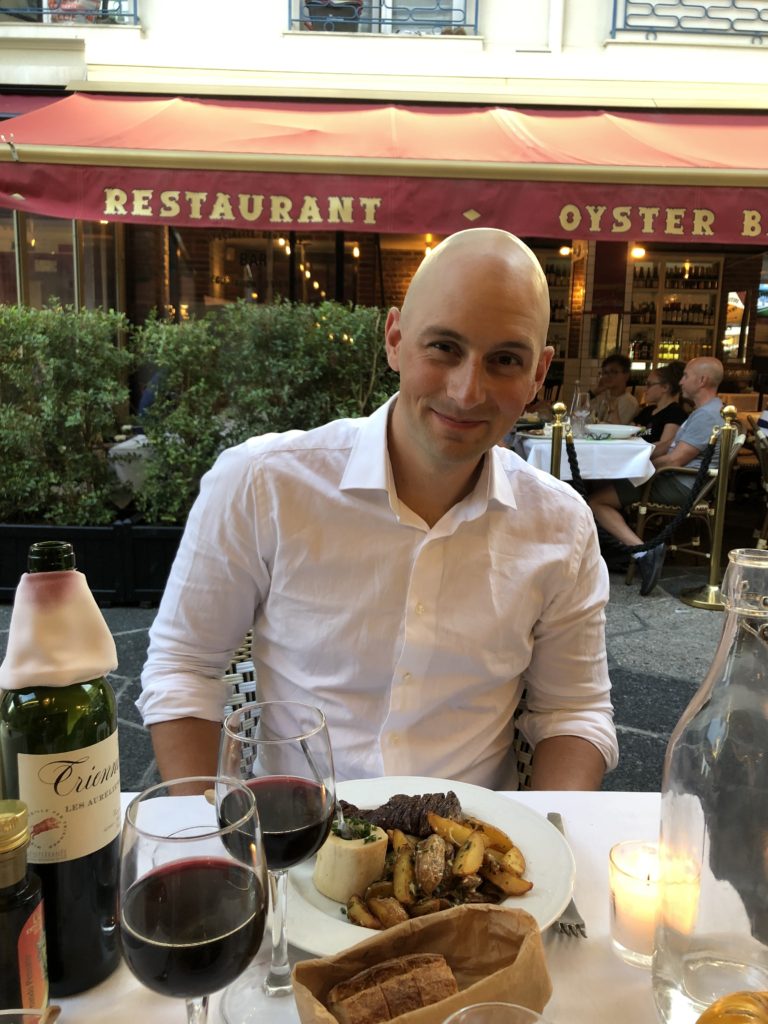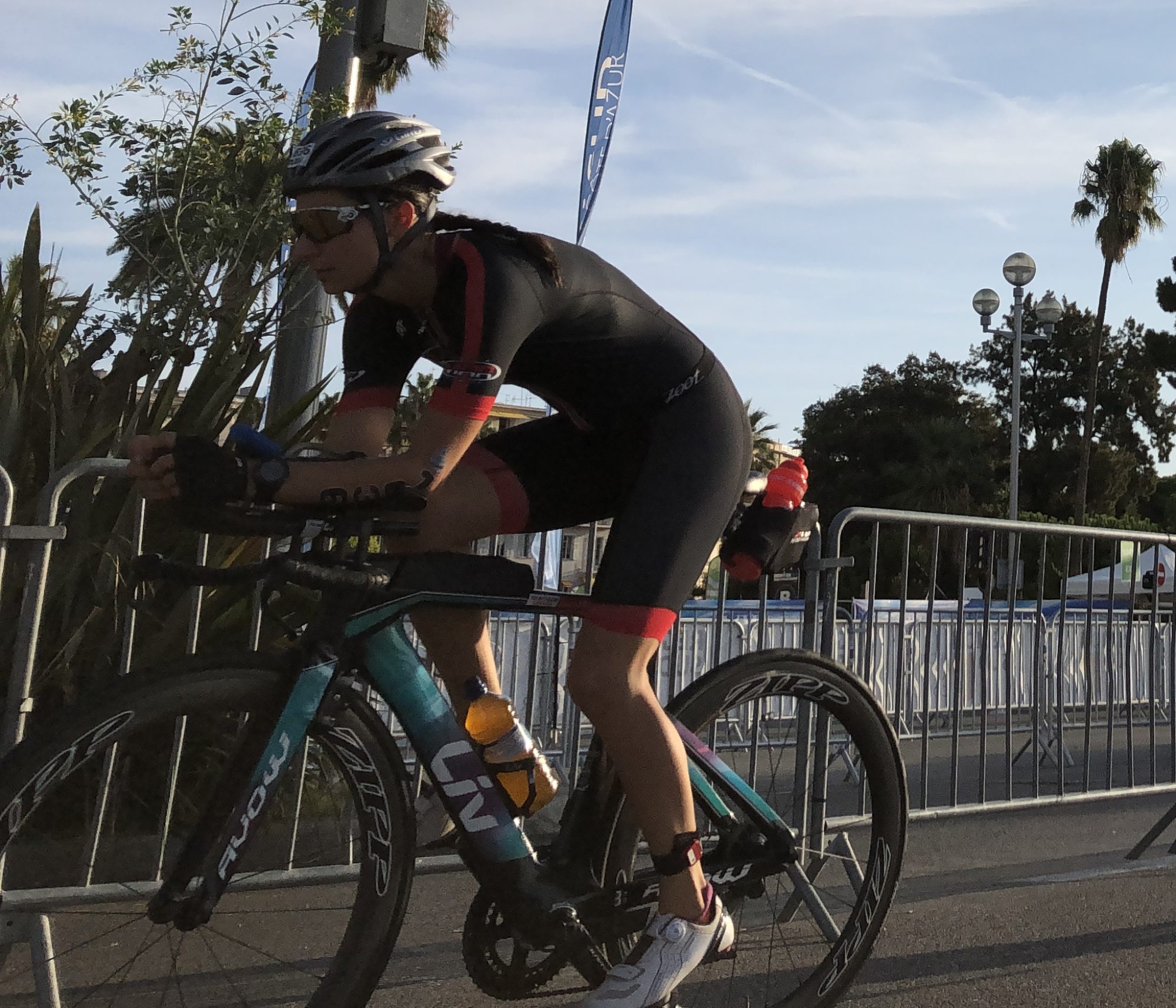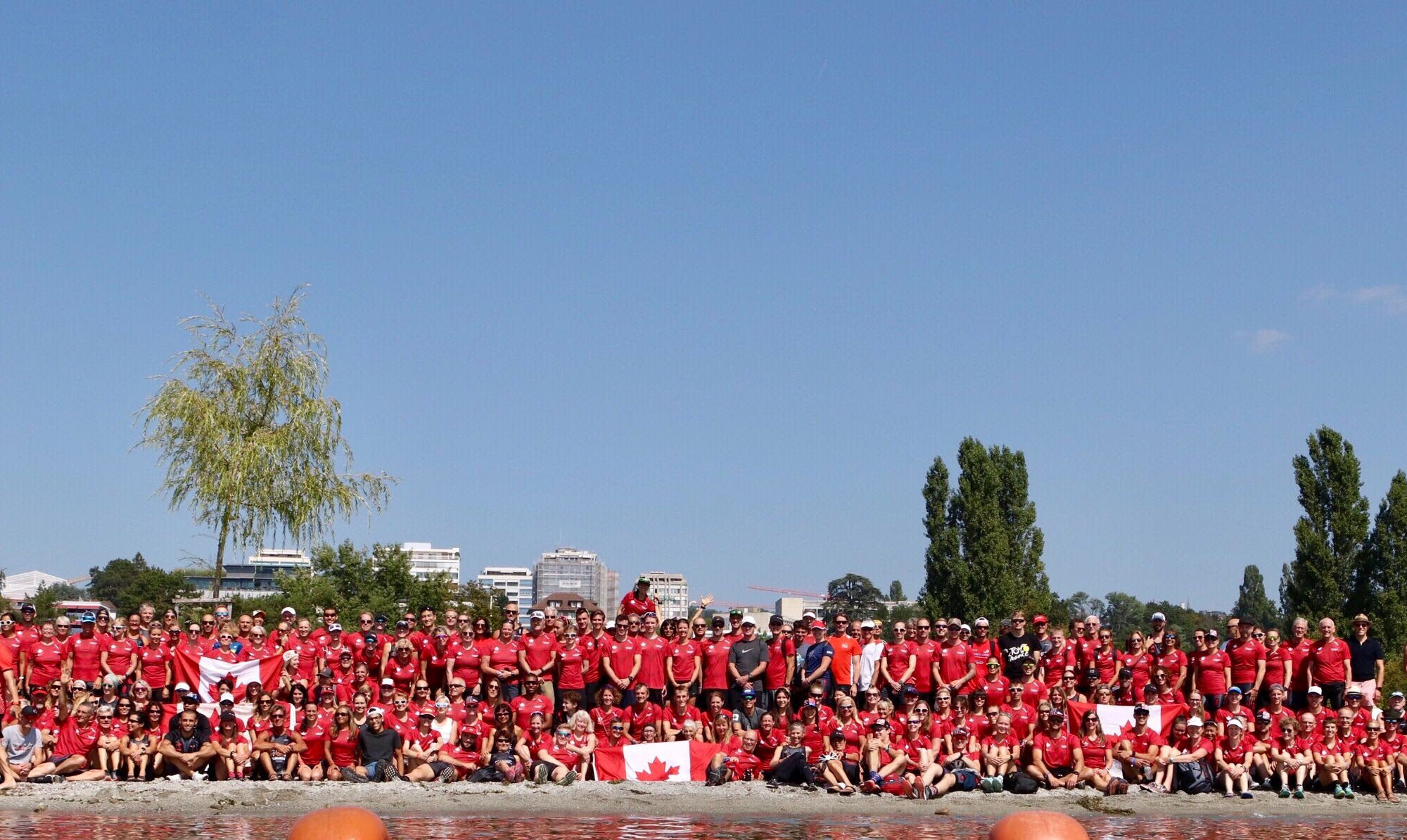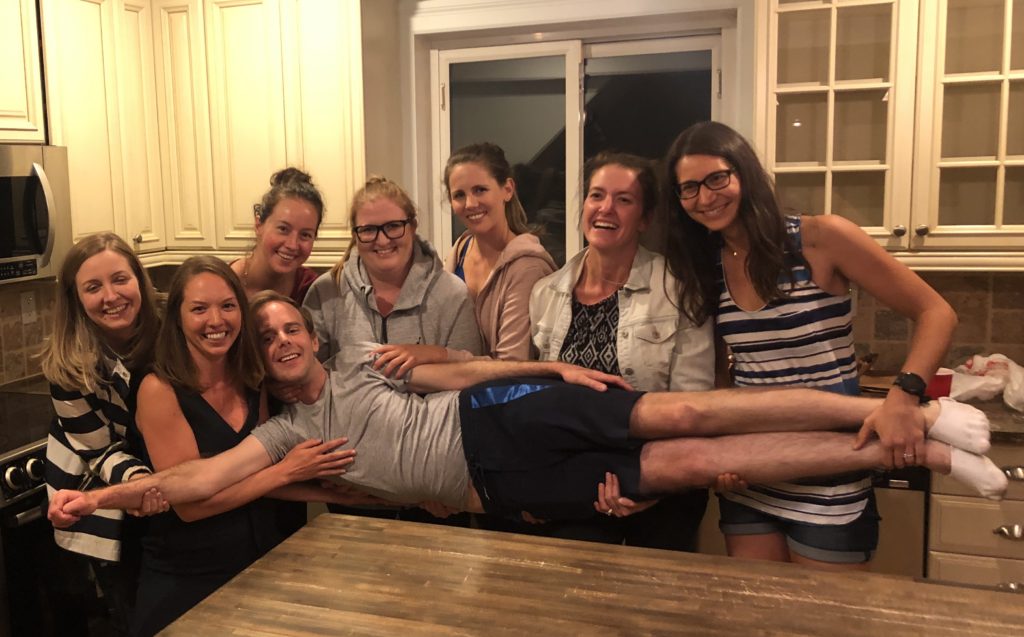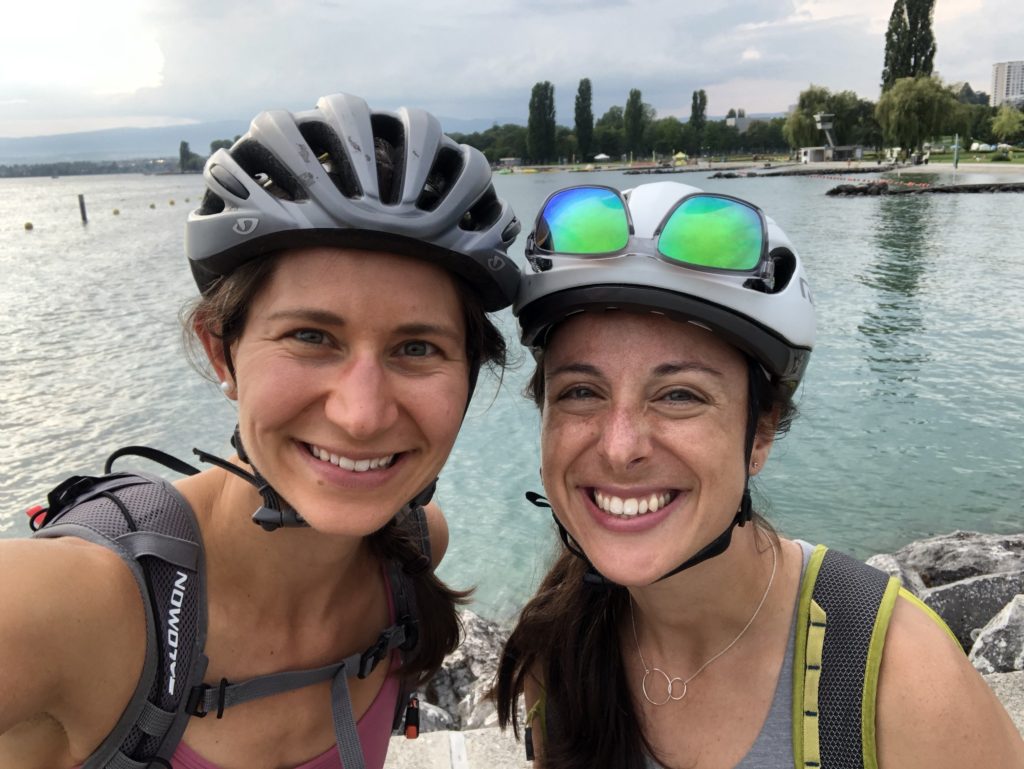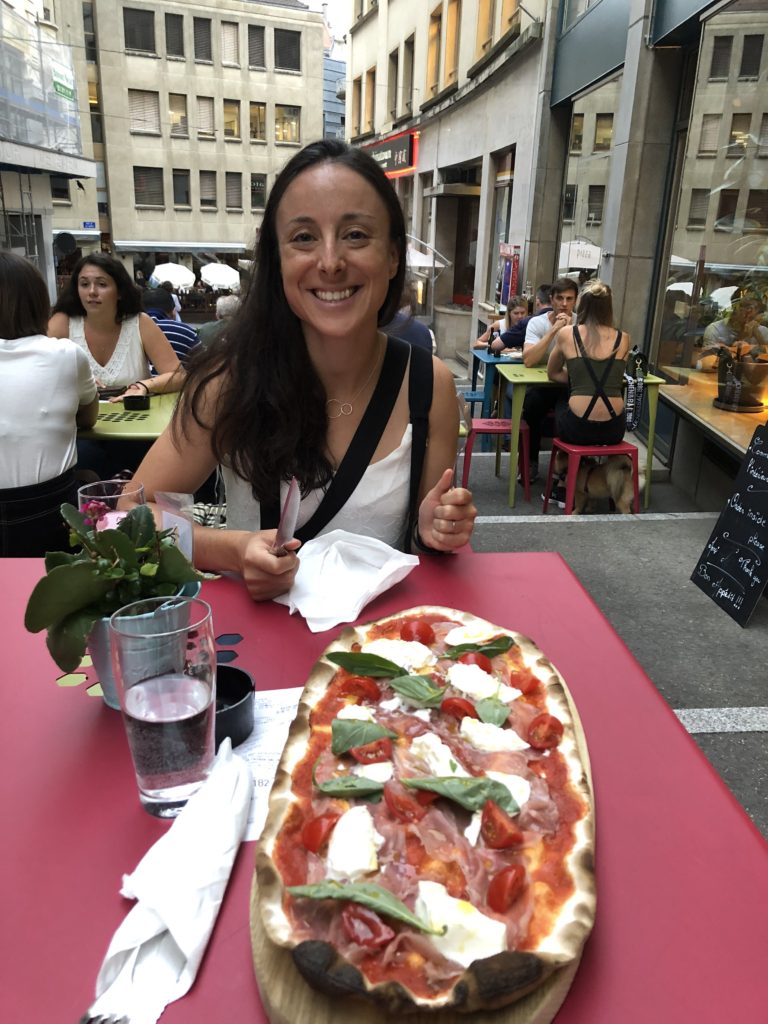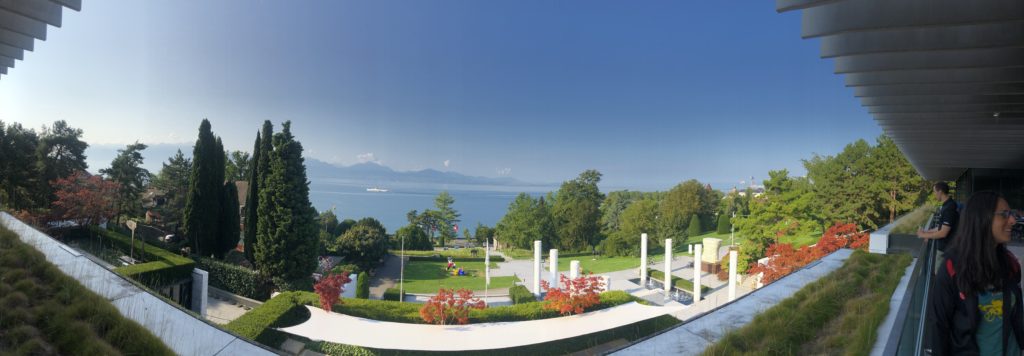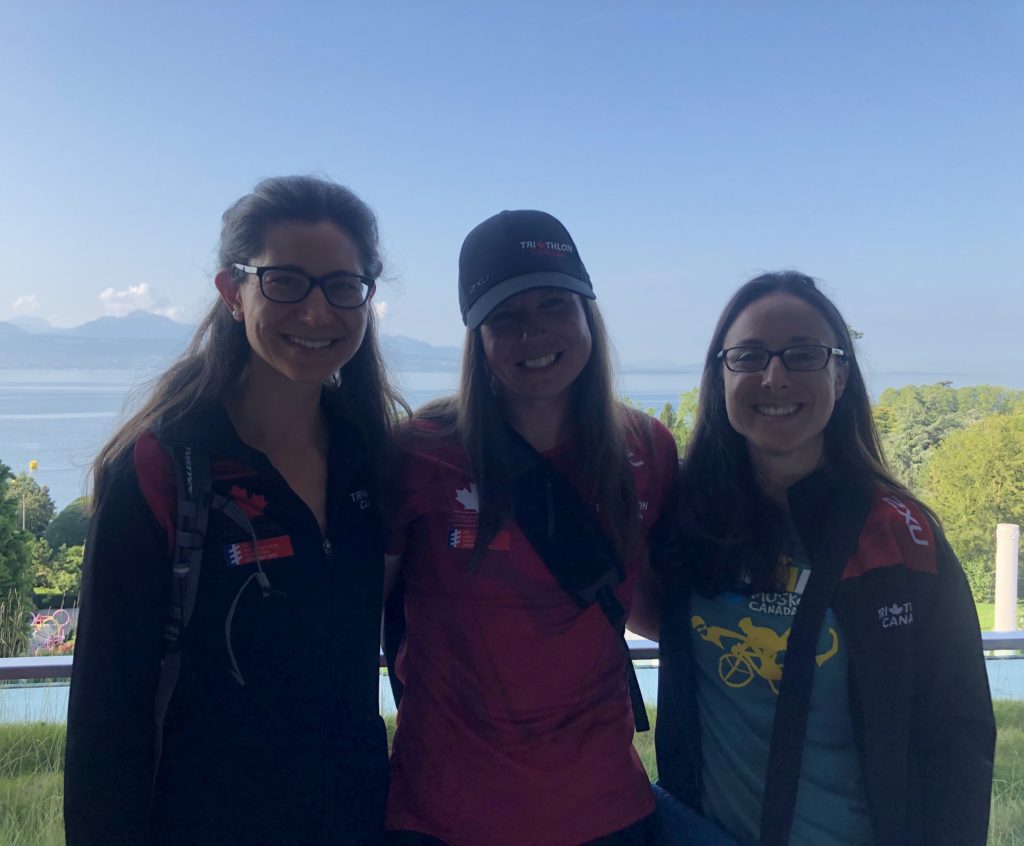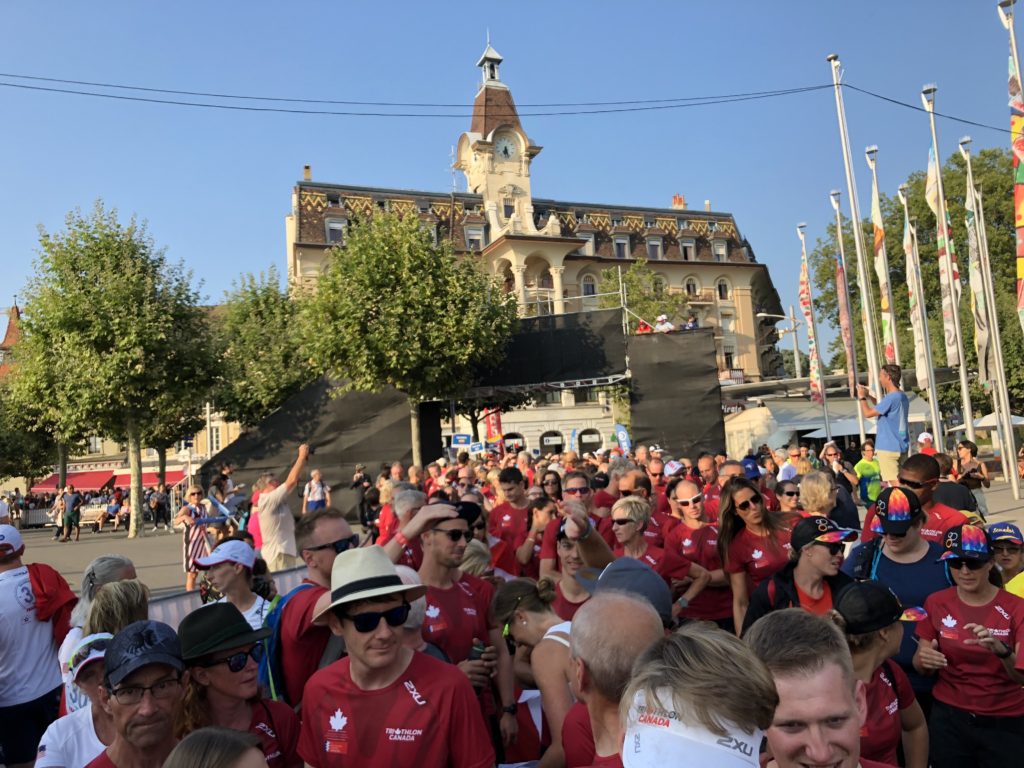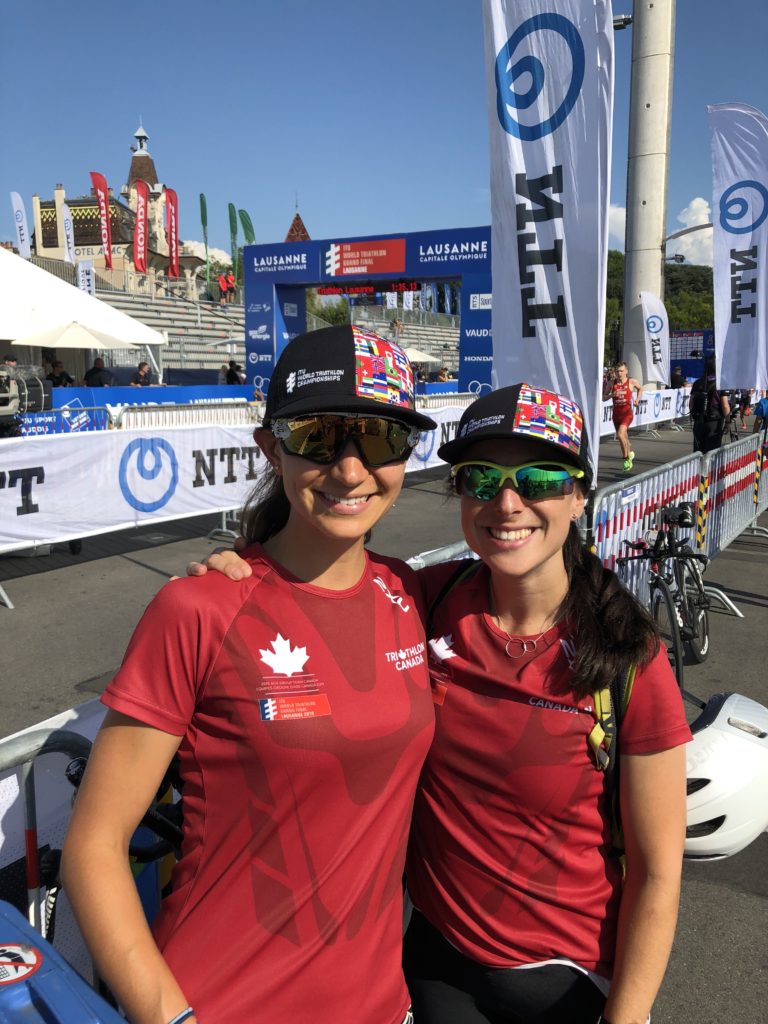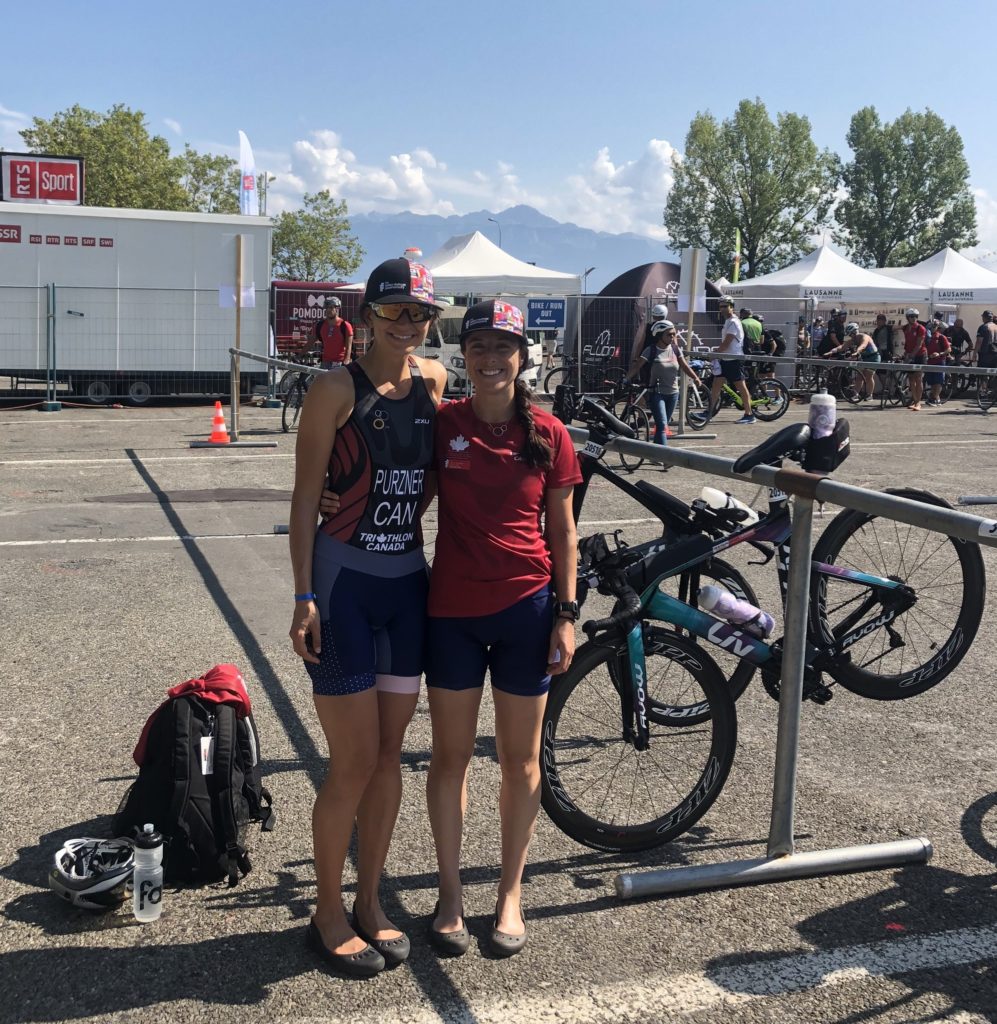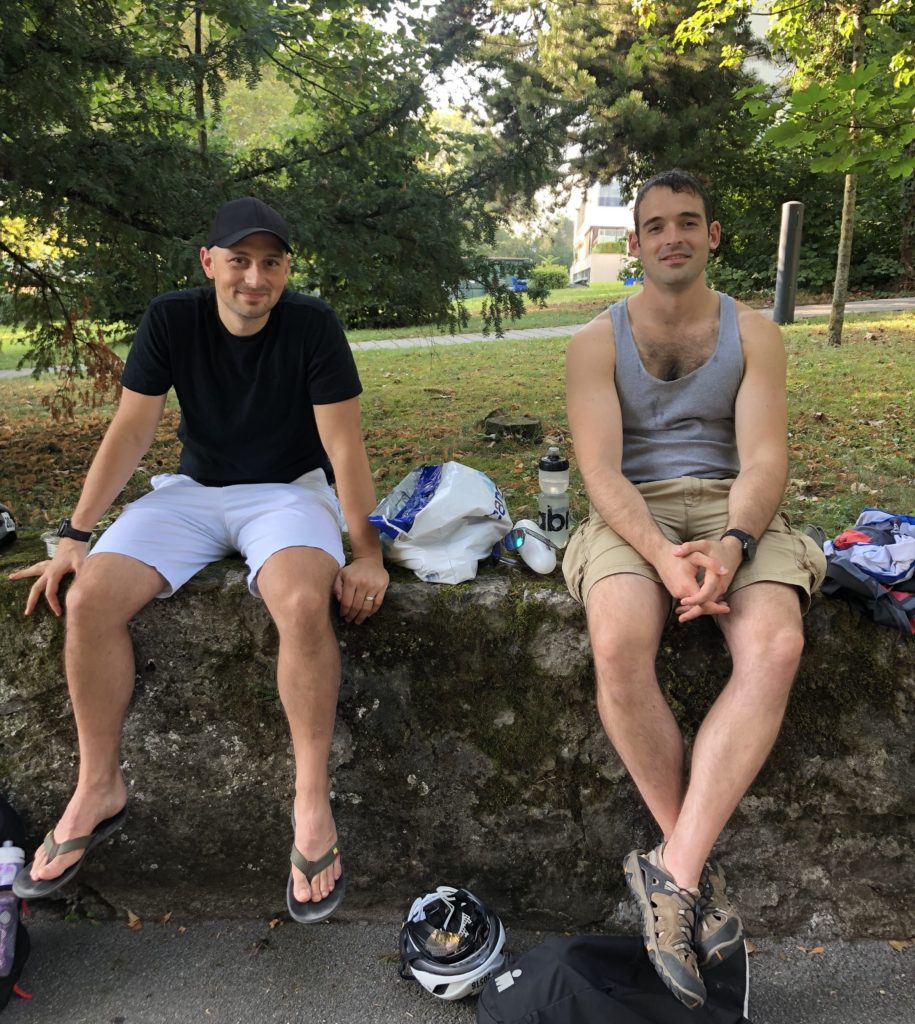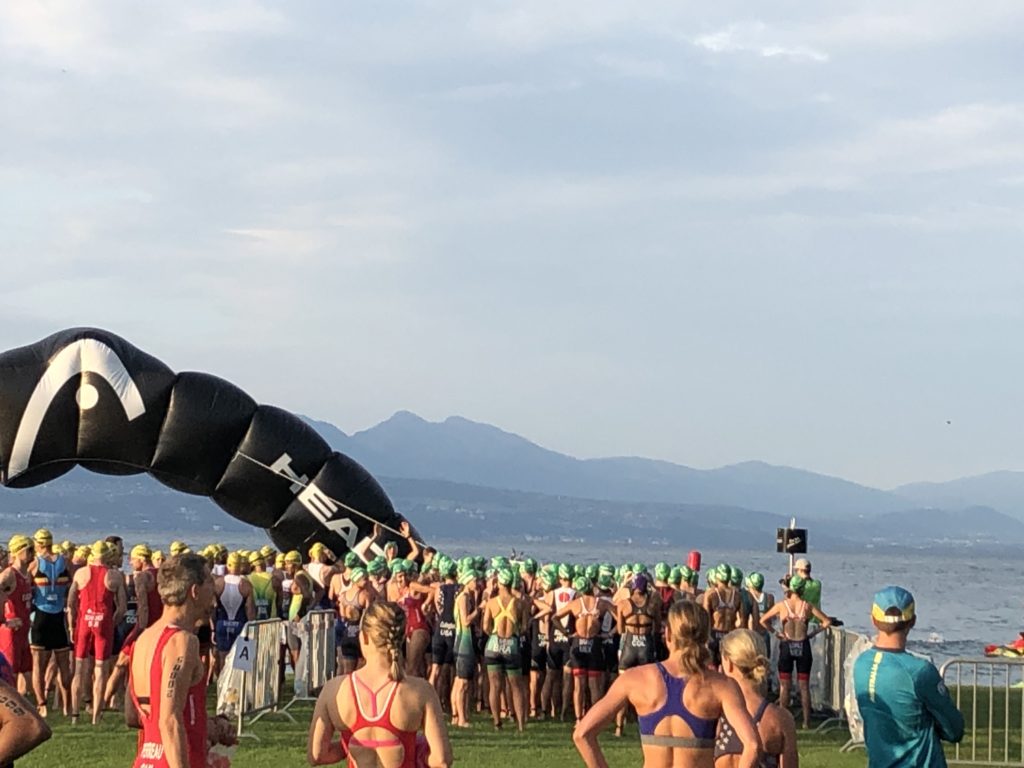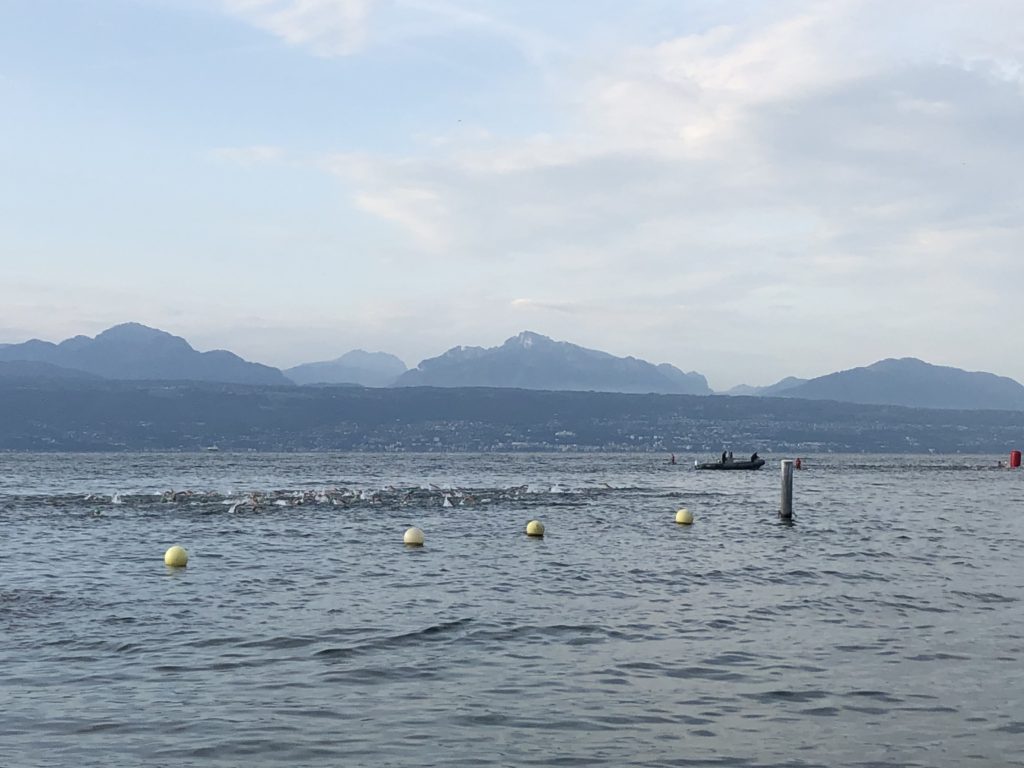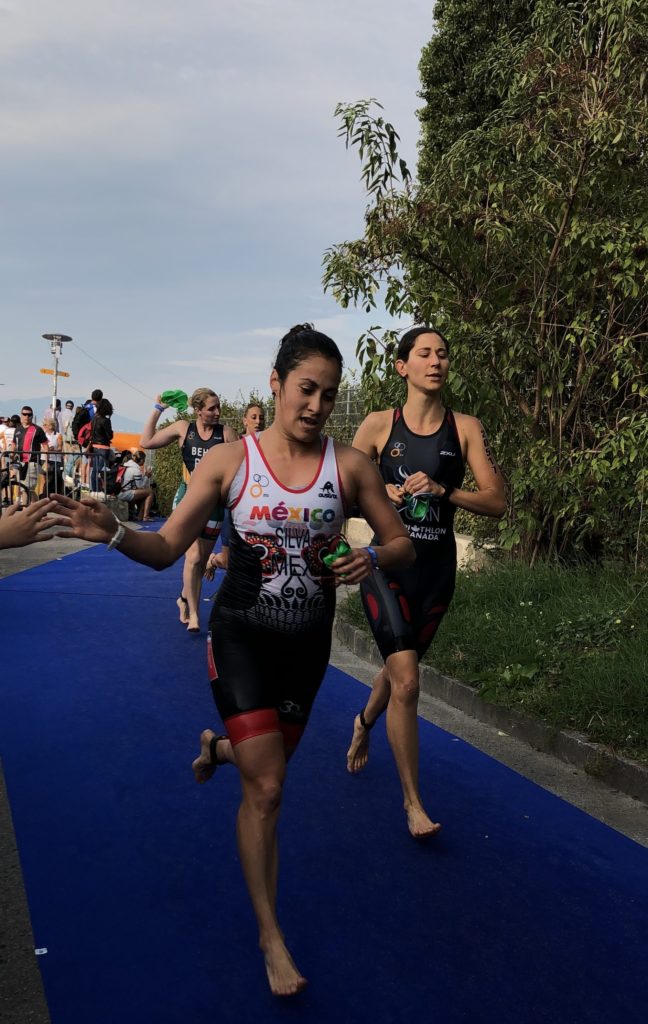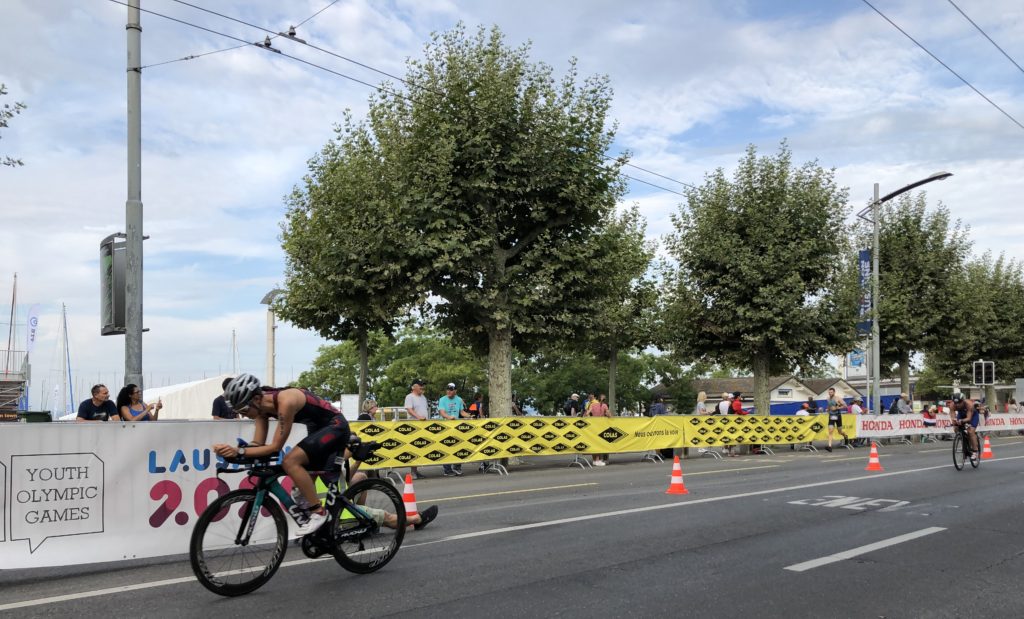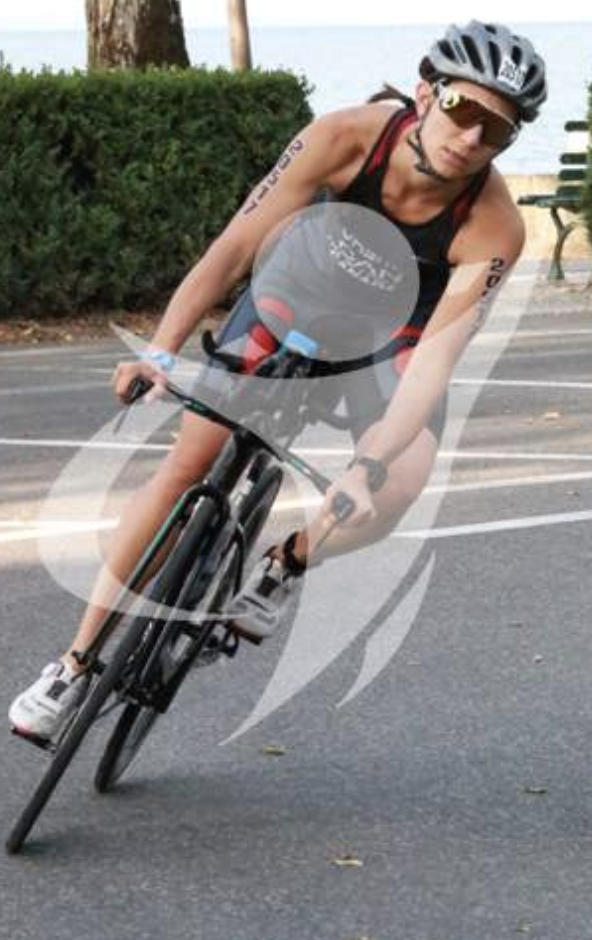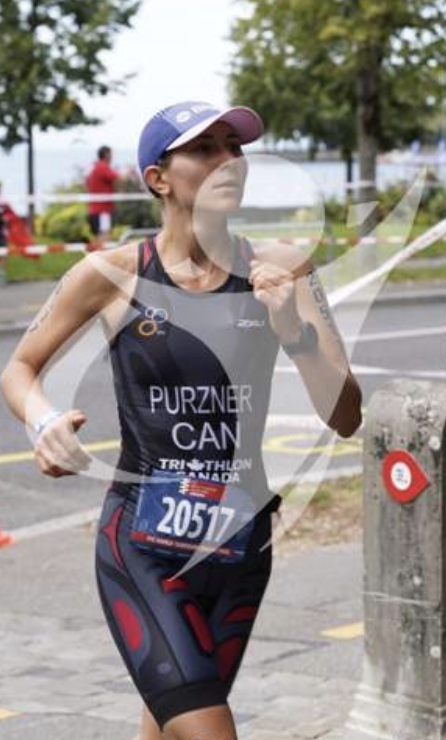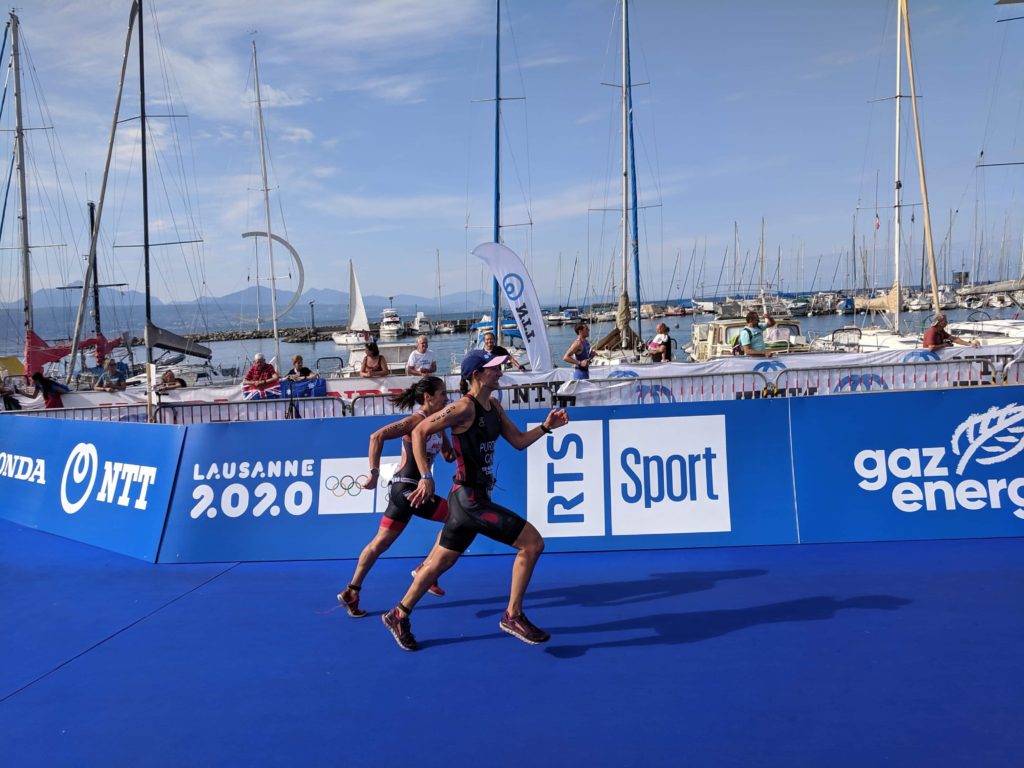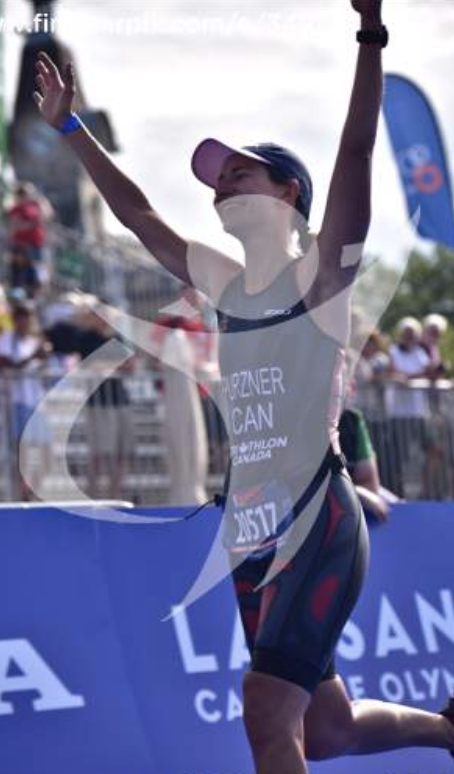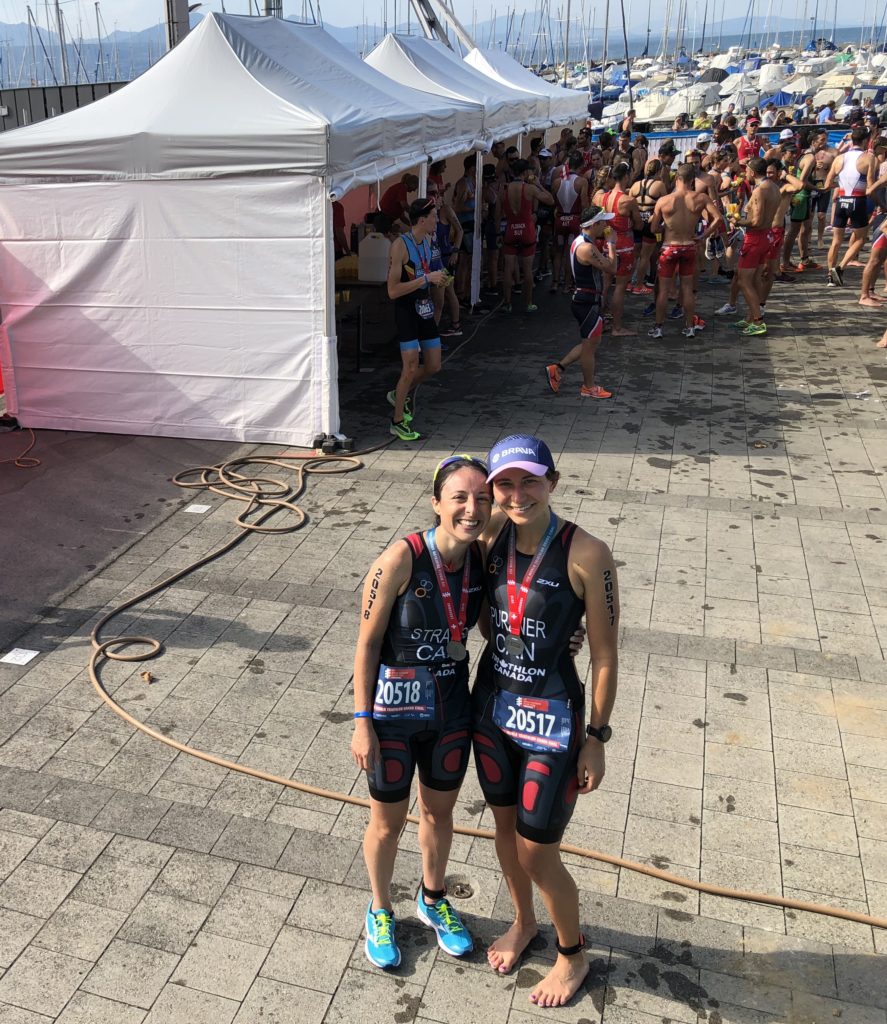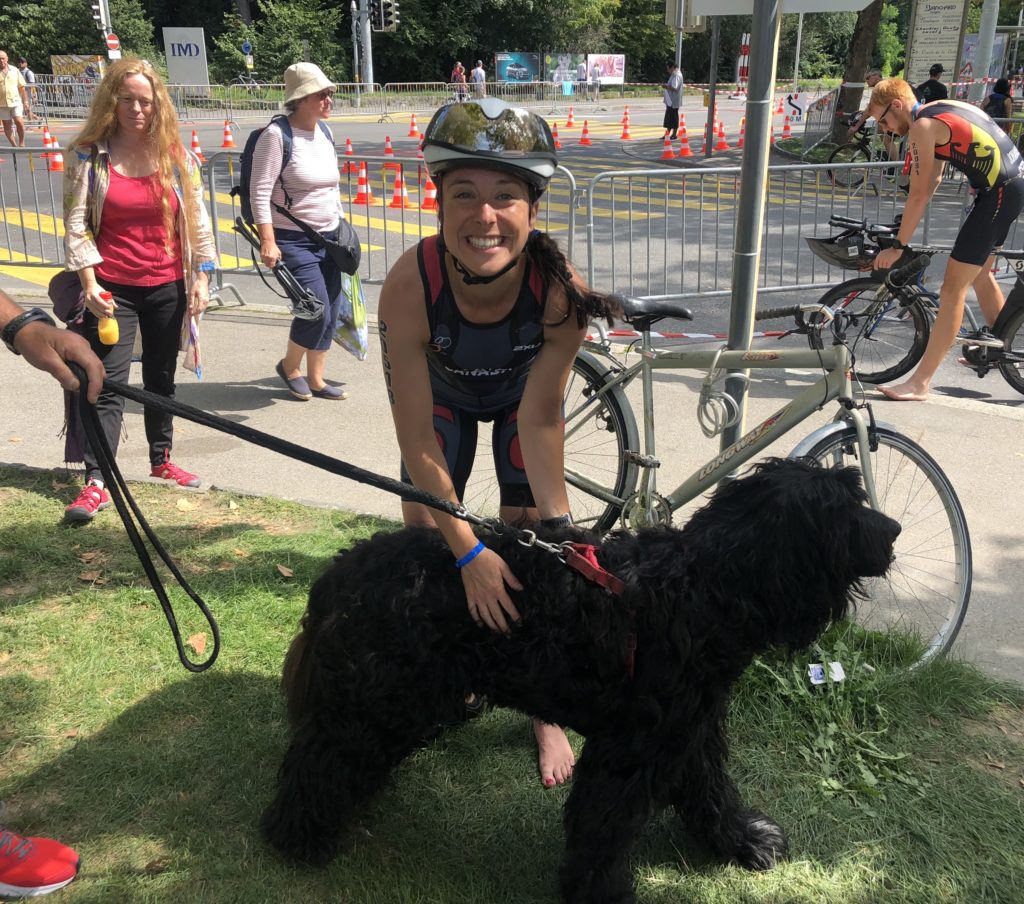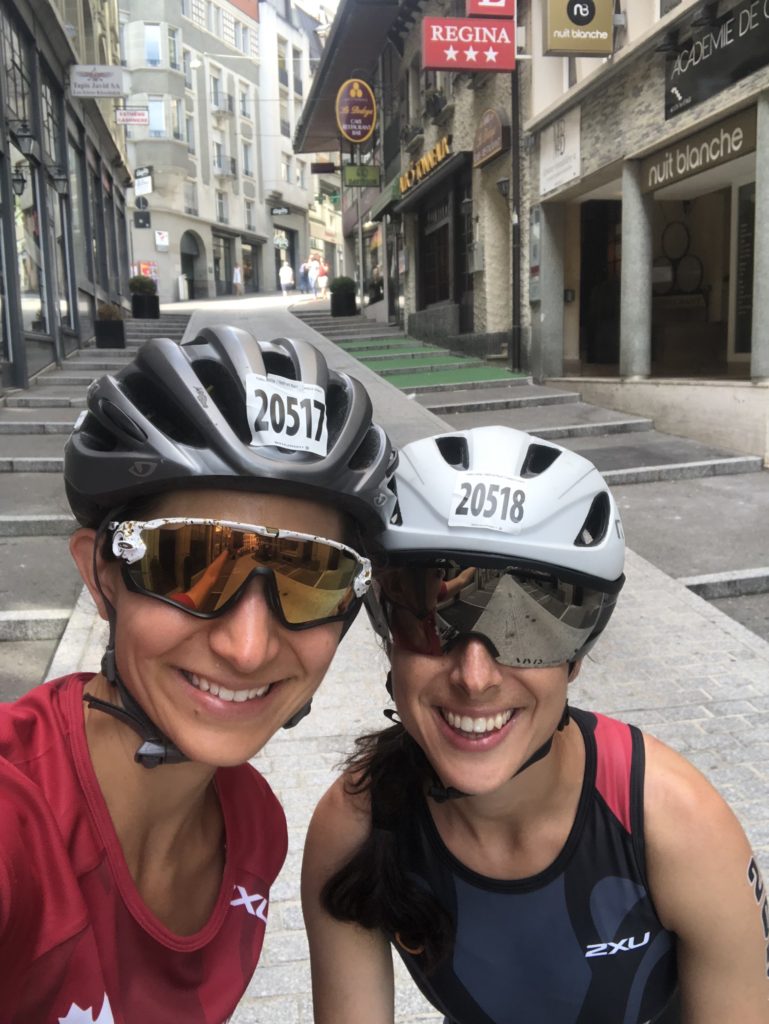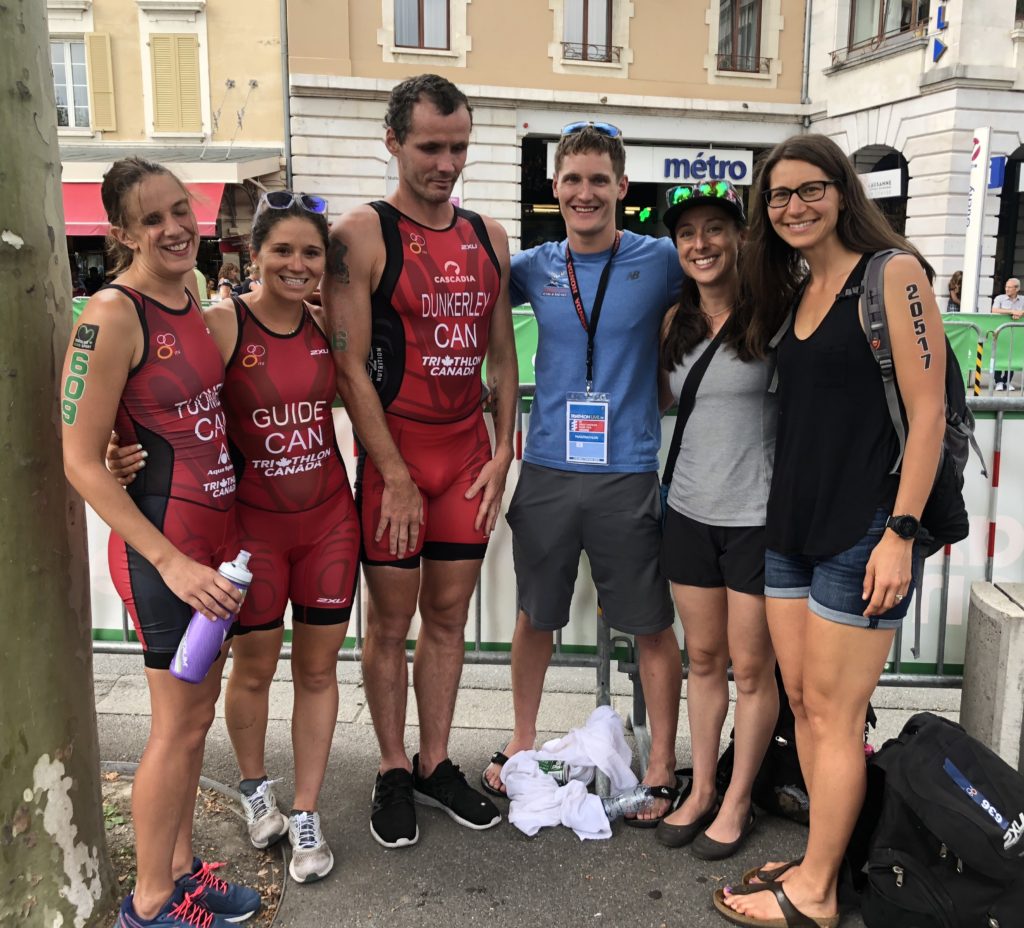Pre-Race
It has been a goal of mine to compete at the Ironman 70.3 World Championship for the past year. I finished 4th in my age group at Lake Placid 70.3 in September 2018 and would have qualified at that point but I left the award ceremony early and missed the slot rolldown. At Ironman 70.3 Victoria this past June, I had another chance and didn’t miss out this time. I finished 9th place in my age group and, thanks to additional slots provided by the Women for Tri initiative, I was offered a slot and accepted without hesitation!
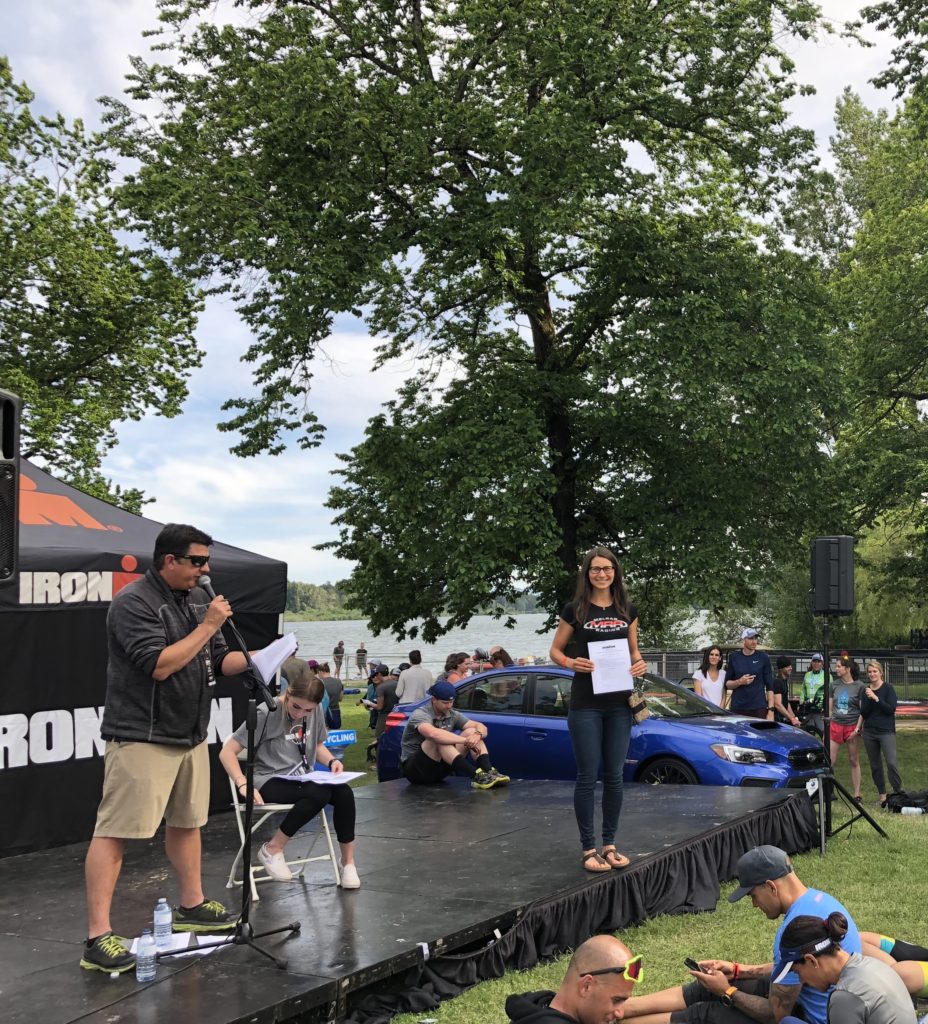
I had already planned to race in the ITU World Triathlon Grand Final in Lausanne, a 7-hour drive from Nice, a week prior. So now, I would be competing in 2 world championships in 1 week!
Different than any other race I have competed in, the IM 70.3 World Championship would be held on 2 separate days: the women’s race on Saturday, September 7th and the men’s race on Sunday, September 8th.
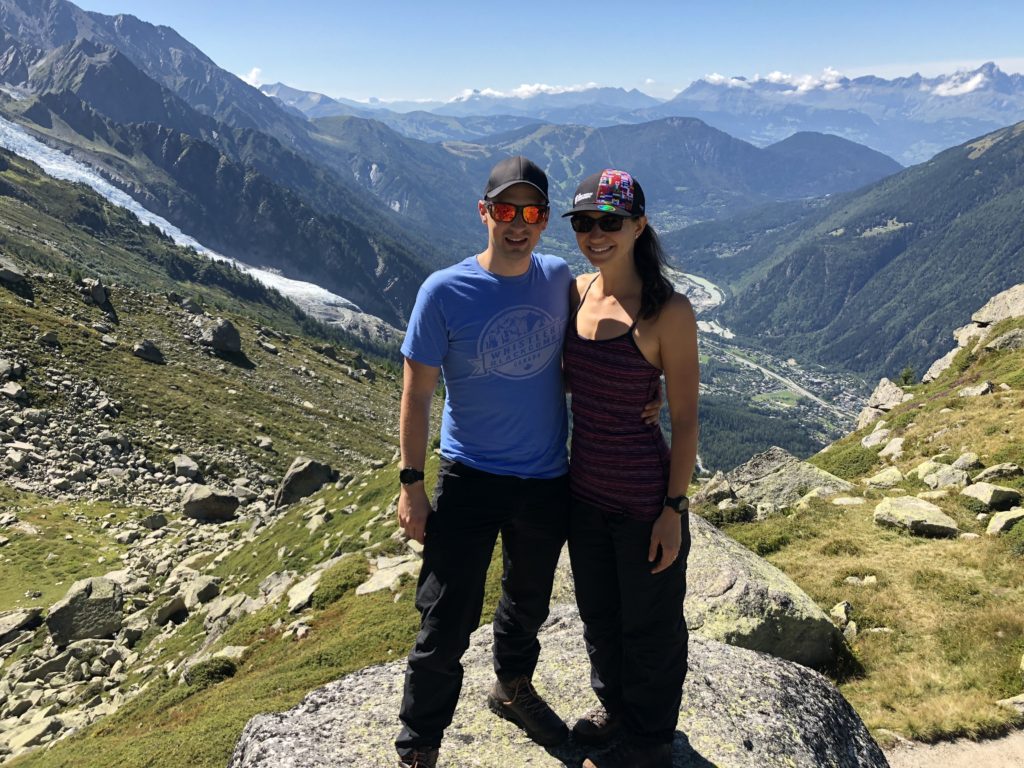
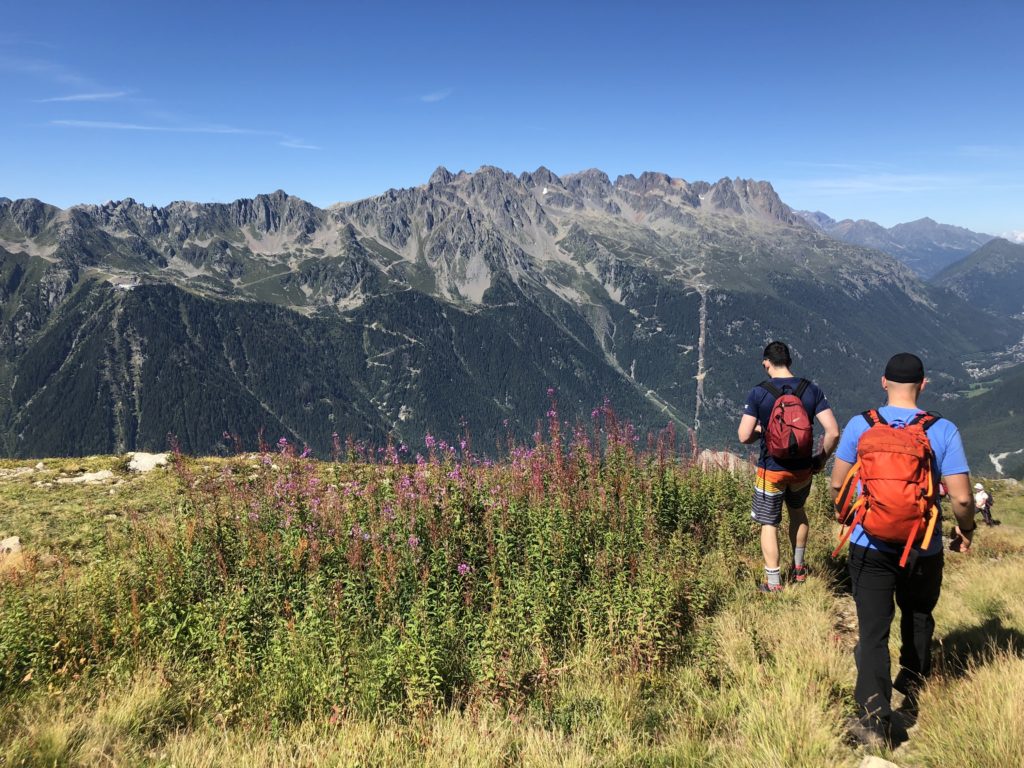
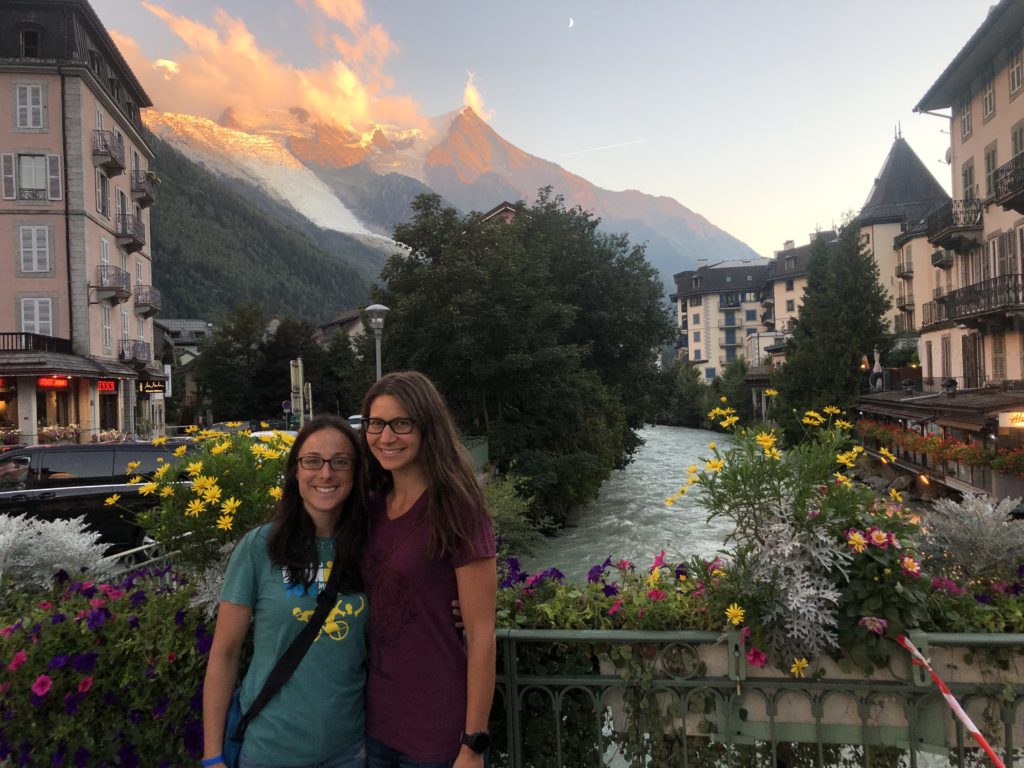
Thursday, Sept 5th
On the Wednesday morning 3 days after the ITU race and 3 days before IM 70.3 WC, I woke up in Chamonix with a sore throat. I felt worried that I wouldn’t be able to perform my best, but remained optimistic that I could recover before race day. I think that the physical stress of traveling halfway across the world mixed with the excitement of international competition affected my immune system. Rod and I had a gorgeous 5-hour drive through the Alps from Chamonix to Nice, then down towards the Mediterranean Sea. The Italians had constructed a 12 km tunnel through Mont Blanc in the 1960s which made it super convenient for us to drive straight through from one valley into the next.
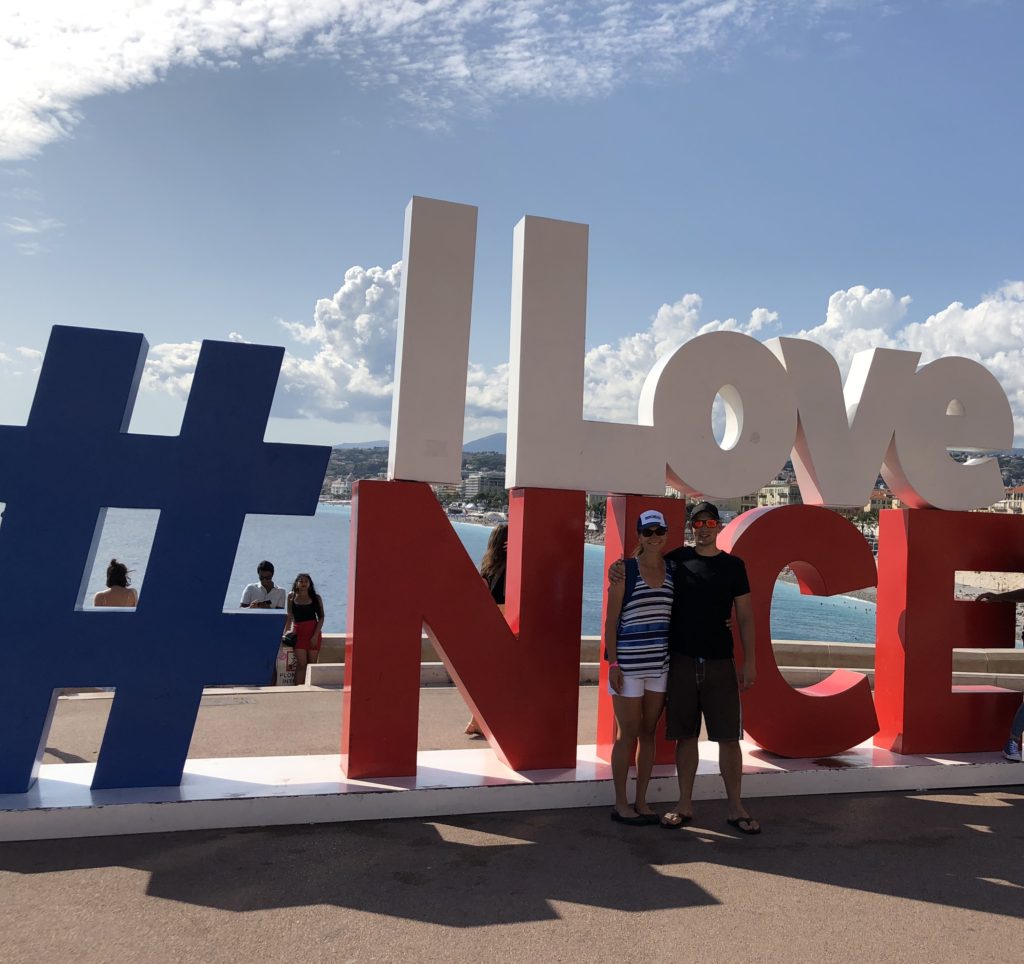
Upon arriving in Nice, we checked into our Airbnb in old town (Vieux Nice) and walked to athlete check-in, where there was super tight security with bag checks and metal detectors everywhere. This heightened security was likely a response to the devastating terrorist attack that occurred in Nice in July 2016.
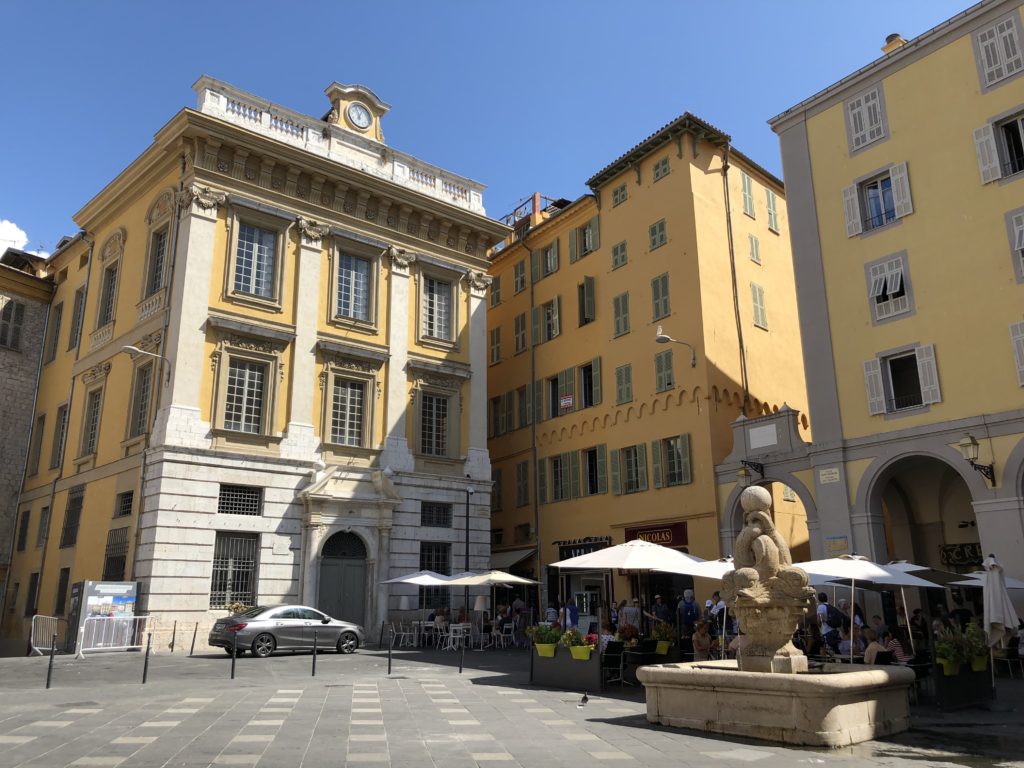
After picking up my race package, I did a short swim in the Mediterranean without my wetsuit; the water was even warmer than Lac Léman and very salty. I have never seen water so blue in my life and I now understand the name Côte d’Azur (“blue coast”). Rod and I whipped up a quick, easy dinner before walking up to the English pre-race briefing at the massive Palais des Expositions. After leaving the briefing, we grabbed gelato with one of my fellow Team Canada teammates and two of his friends before heading home to bed.
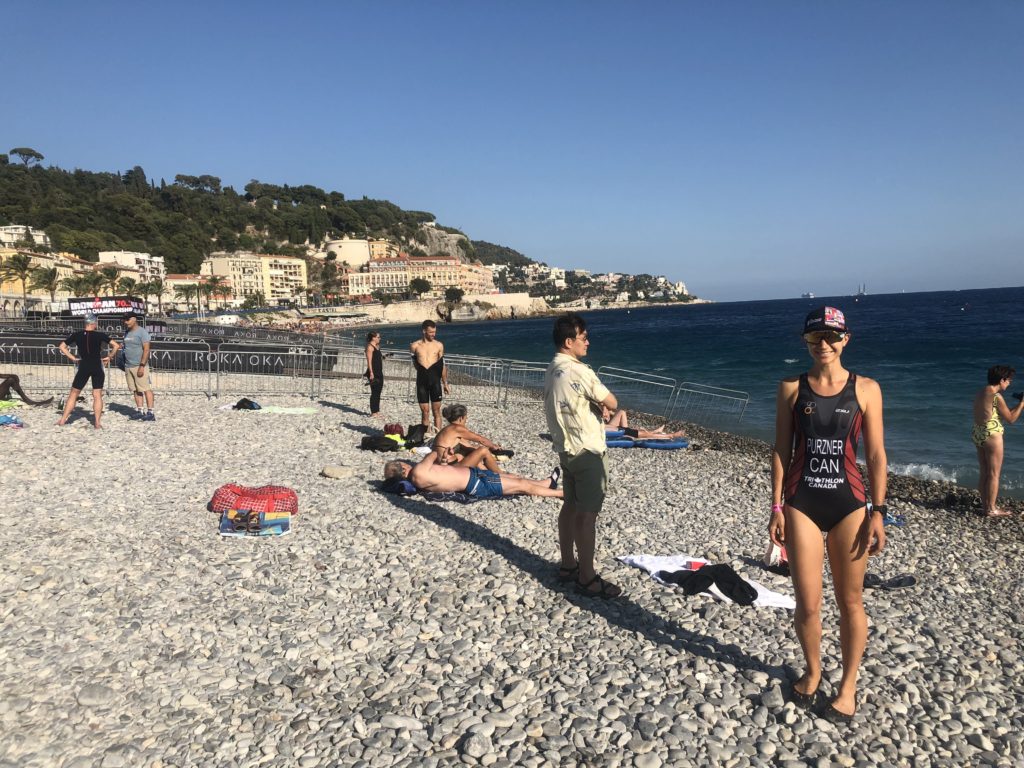
Friday, Sept 6th
I woke up at 7 am so I could preview the hilly, technical bike course, as suggested by my coach. (Check out this incredible aerial footage of Col de Vence.) I sat in the passenger seat while Rod drove the uphill portion of the bike course. The first 10k were fast and flat, followed by a few short and steep climbs for the next 15k. Following this, we got into the final gradual 9k steady climb to the mountain pass, Col de Vence, which has been part of the Tour de France in the past.
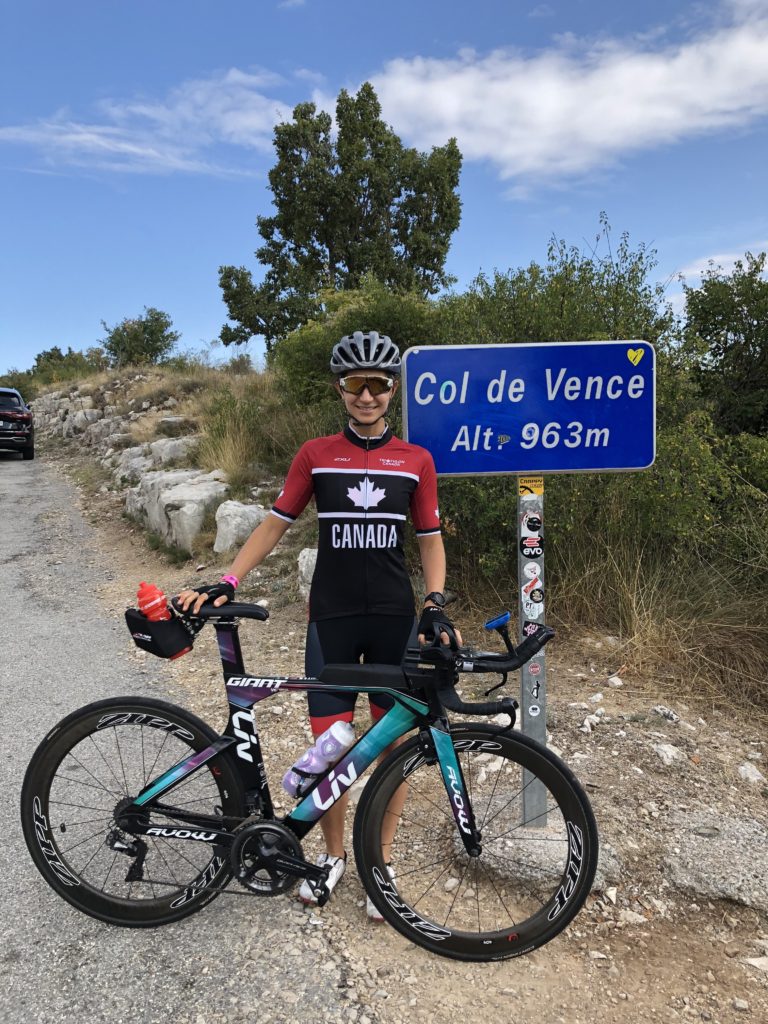
I hopped on my bike at Col de Vence and caught up to a group of triathletes who were also descending the course. Rod followed me down as I cautiously descended the most technical portion of the bike course behind an American athlete, without destroying my legs for the race the next day. There were a few sharp hairpin turns and blind corners, but the road was in excellent condition and the scenery was spectacular. Between the 4 of us triathletes, we had 3 chase vehicles that were following 100m behind the last cyclist – I felt like a pro cyclist with a support car. From Col de Vence, I descended for nearly an hour and had still not reached the bottom of the descent. I hopped back in the car and Rod drove the rest of the way back to Nice.
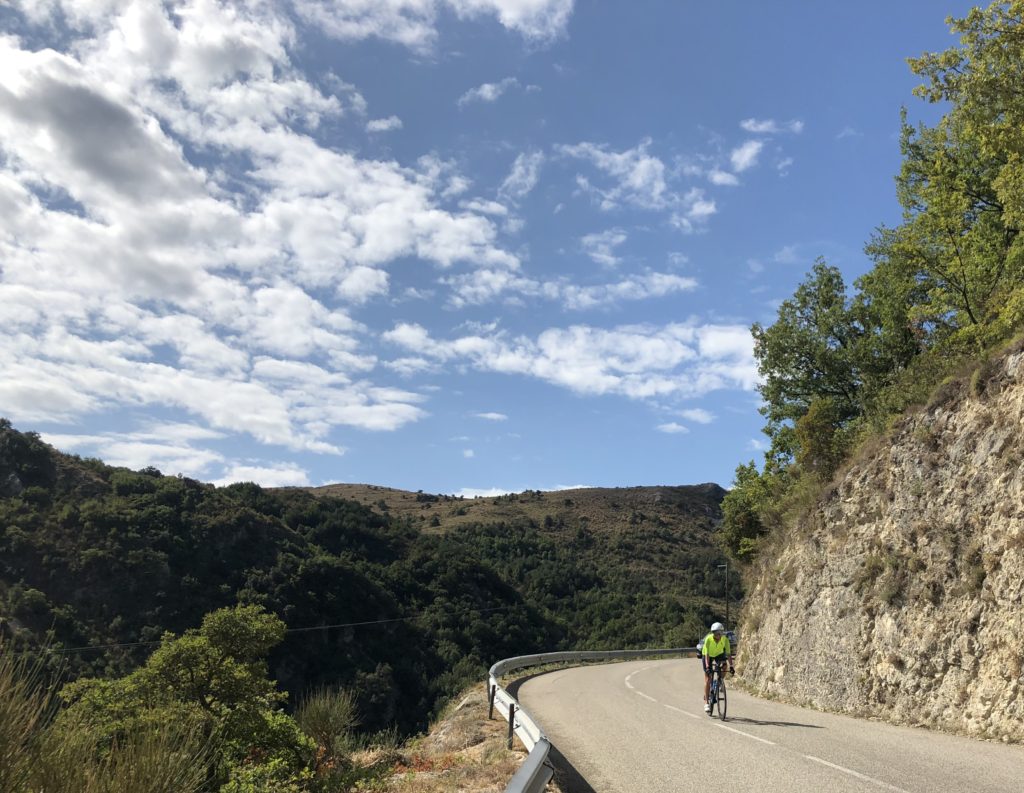
After lunch at our Airbnb, I realized I was missing my swim cap from my race package and hurried over to athlete check-in to grab a green one. Rod joined me for my obligatory pre-race 20-minute run along the Promenade des Anglais next to the Mediterranean Sea. Unlike Ironman Canada, we would not have access to our bike and run gear bags on race morning, so I was forced to pack everything I would need in T1 and T2 in advance. A thunderstorm rolled in right as Rod and I were dropping off my bike and run gear bags. We grabbed an early dinner, went for ice cream and were in bed by 10:30 pm.
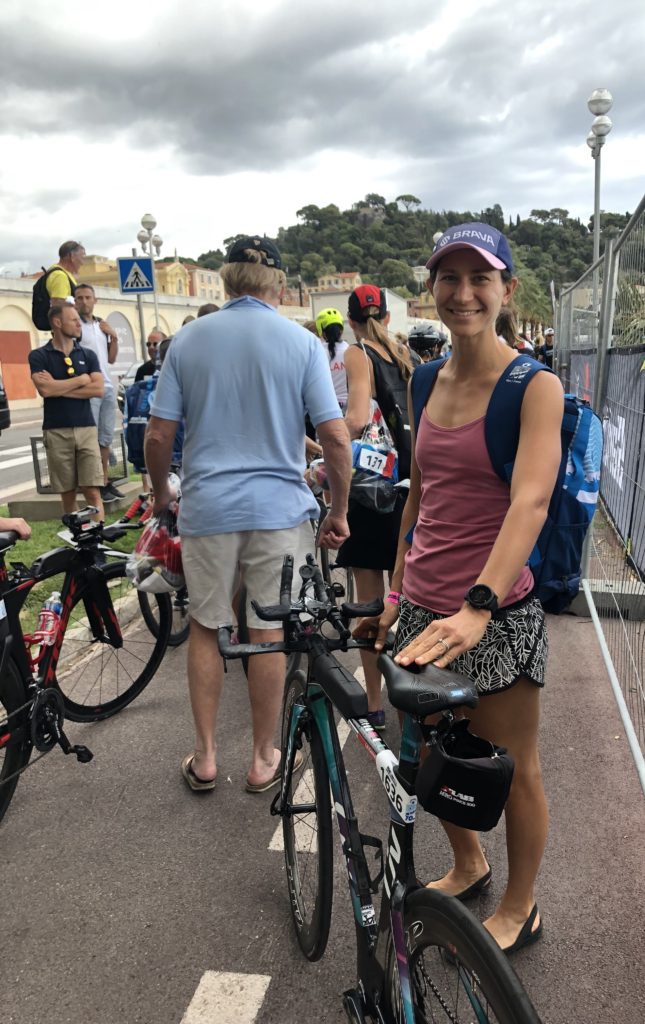
Saturday, Sept 7th
In usual pre-race fashion, I woke up with a mild case of pre-race jitters at 4:30 am before my alarm went off. The one benefit of racing twice in the same week is that I was considerably more calm than usual. Breakfast consisted of coffee, scrambled eggs, toast with nut butter and a banana. On Friday, the water temperature was around 24.5o Celsius, the highest allowable temperature for a wetsuit legal swim. Thankfully, the air temperature had dropped by a few degrees overnight and as soon as I arrived in transition, the announcer informed us that it would be wetsuit legal for age group athletes. Similar to my competitors, I felt relieved that I would have the added buoyancy of my wetsuit. (For the pros it was not a wetsuit legal day; they race in their swim skins if it’s above 22o Celsius.)
I set up my bike nutrition and double checked my gears, brakes and aerobars. I noticed that my right elbow pad was slightly loose and after my failed attempt to secure the bolts myself, I had the bike mechanic tighten the lower bolts and inflate my tires. I ran into Katie, a fellow Canadian in my age group, whom I had met at the Toronto Triathlon Festival last July. It was comforting to see a familiar face in a sea of unfamiliar ones. We left transition together, then I spent 20 minutes pacing along the transition zone fence looking for Rod, but I couldn’t find him and tried not to panic. I’m a strong, independent woman, but I was really hoping to kiss my husband one last time before I embarked on my first ocean swim in a race and definitely the most dangerous bike course I have ever ridden. I eventually gave up and was struggling to put my wetsuit on near the drop-off for morning clothes when he called out my name. I immediately felt at ease. He wished me a good race and took one last photo of me before I entered the athletes only area.
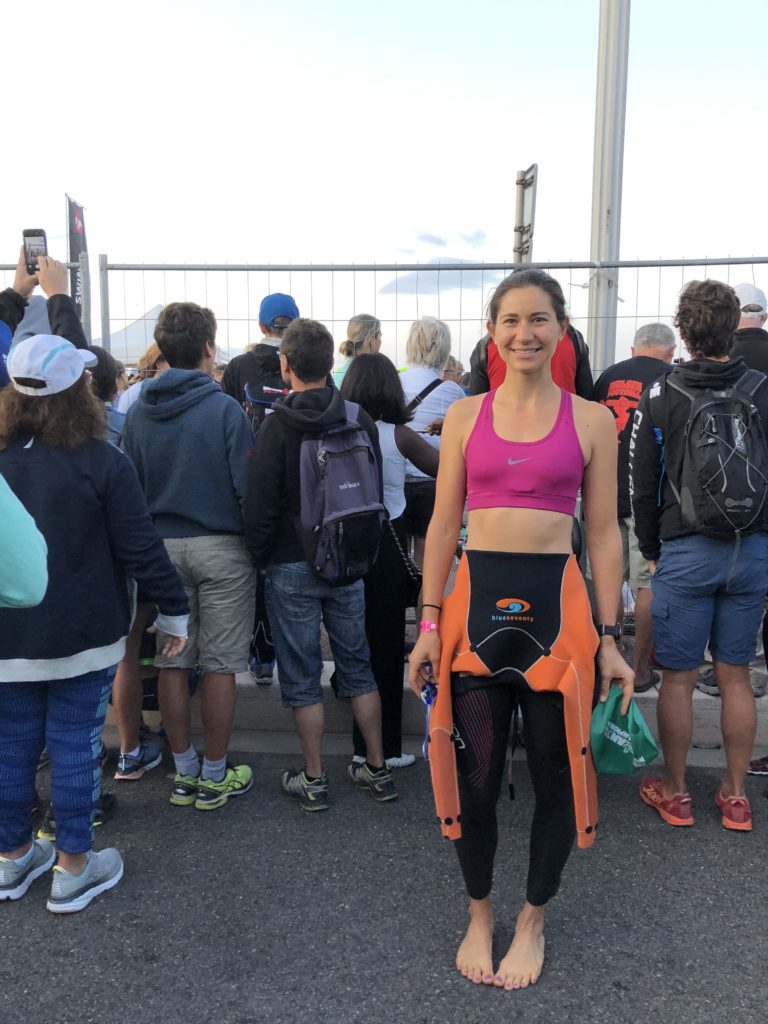
(Check out the IM 70.3 WC course overview and pro women’s race highlights.)

It was incredible to see helicopters and drones overhead, providing live race coverage across the world. It hit me at that moment that I was about to race at a world championship event, with the best triathletes in the world. Although I felt a bit anxious, I maintained a calm outward demeanor. After the French national anthem played, the pro women started their swim start promptly at 7 am, which was led by Lucy Charles for the entire swim. I spent 20 minutes waiting in line for a last-minute porta potty stop – the one downside to an all-female race field is that us women always take longer in the washrooms than men. About 15 minutes before our age group start time, I joined the green swim cap group and seeded myself in the middle of the pack, close to Katie and 2 other athletes from Ontario. Surprisingly, I wasn’t as nervous as I had been in Lausanne, likely because I had just raced 6 days earlier. I was almost looking forward to entering the water!
1900m Swim
(Check out my swim on Strava!)
Time: 34:02
Pace: 1:47/100m
Division Rank: 60/246
Overall Rank: 375/1778
The triangular swim course was 850m straight out from the beach, 200m across to the right and another 850m back to shore. The swim start was a self-seeded rolling start within each age group, with 10 athletes setting off every 10 seconds. After a brief sprint on the black carpet laid atop the uneven pebbly beach, I dashed into the water as one of the first athletes in my small group. I swam hard with a quick turnover for the first few hundred metres, feeling confident and powerful in my wetsuit. Although the water temperature was very pleasant, I worried that I would be quite warm by the end of the swim. The waves were gently rolling and the course was well-marked with large, coloured buoys every 100m, which made it easy to sight. Glancing down into the blue abyss below me, I spotted an orange octopus swimming around 8 feet below the surface. I had a moment of awe before I shifted my attention back to swimming.
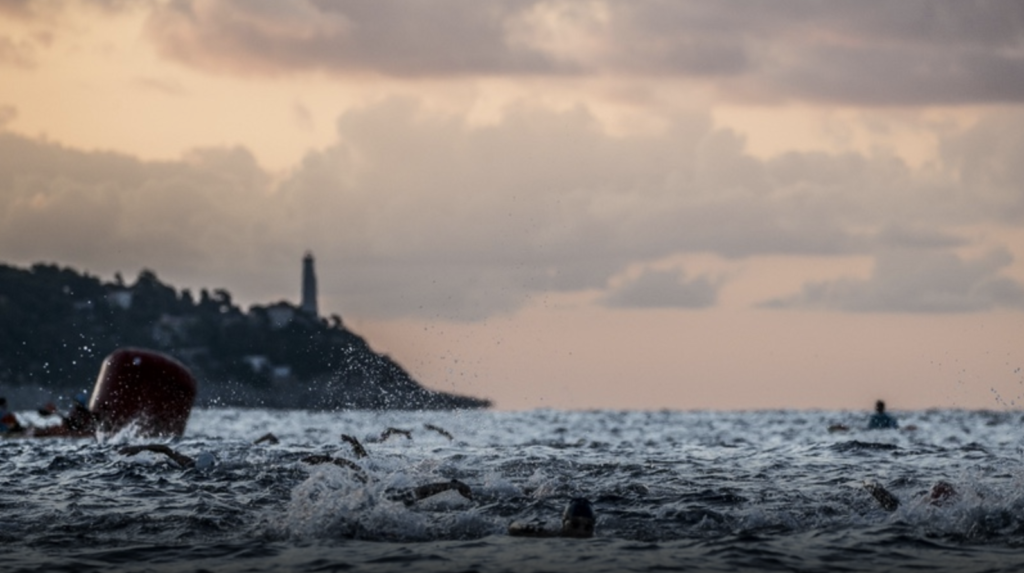
The first 800m felt fast and I didn’t realize the current was actually assisting us away from shore until I made the first right turn and felt waves pushing into me from my right side. It became more challenging to sight with the increased waves and athlete congestion on this 200m section of the course, but I followed the bubbles ahead of me and sighted more frequently. Occasionally, I nearly swam into one of the many kayaks positioned on the inland side and definitely ingested too much saltwater. As I made a sharp turn around the final turn buoy, I managed to swim on another woman’s hip for a couple hundred metres before accidentally veering off slightly to the right. I almost swam on the wrong side of the final buoy before correcting my course and keeping it on my right. In Nice, the water drops off quickly past the shore and is pretty deep until you are within a few meters of shore, where the pebbly bottom abruptly comes up to meet you.
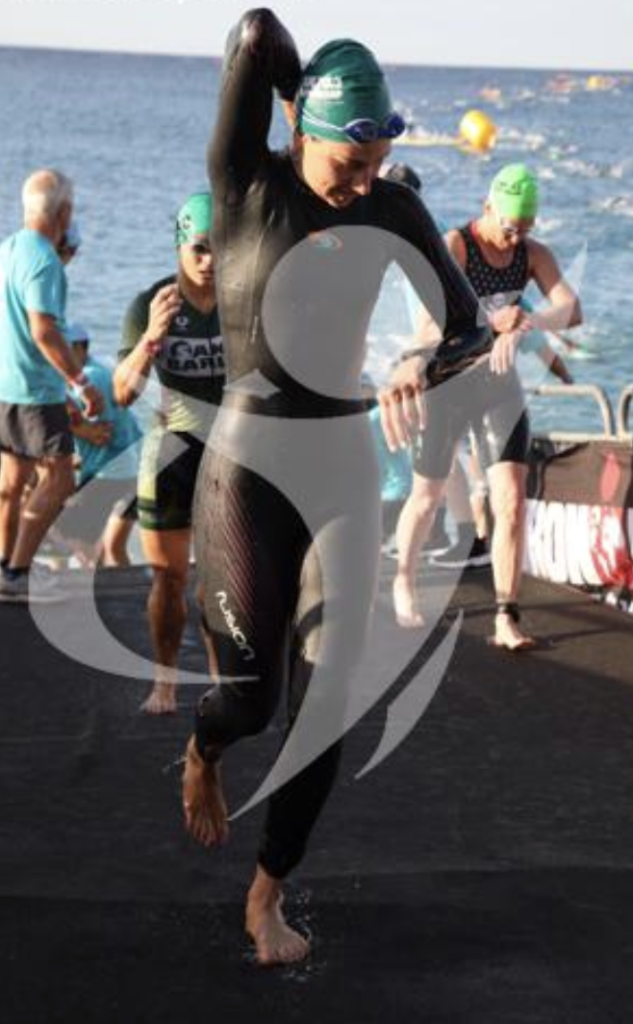
As I exited the water and grabbed onto a rope that was set up to assist us, an older athlete in front me struggled to regain her balance and required assistance from the volunteers. I think a lot of athletes felt dizzy from the waves and drinking saltwater. I ran up the black mat, unzipped the top half of my wetsuit (much more efficiently than Ironman Canada) and lay down on my back so the wetsuit strippers could peel my wetsuit off my legs. After grabbing my bike gear bag from the rack, I ran into a change tent and quickly changed out of my tri shorts and into my MelRad trisuit. Since Ironman follows the local triathlon organization rules, all athletes were required to wear race bibs on our backside for the bike. The day before, I had made the decision to do a full outfit change after the swim to minimize chafing on the bike, regardless of whether I would be wearing a wetsuit. I know my T1 time suffered because of this decision, but my priority was to be comfortable and be able to enjoy cycling in Provence with my husband a couple days after the race.
T1: 5:19
91k Bike
(Check out my ride on Strava!)
Time: 3:10:43
Average Speed: 28.95 km/h
Average HR: 153 bpm
Division Rank: 67/246
Overall Rank: 312/1778
Despite competing in triathlons for a decade, I have still not learned how to perform a flying mount. Although I’ve mastered running in my bike cleats without falling on my face or butt, it’s frustrating to get passed by athletes who are running much faster because they’re barefoot. As mentioned in my ITU race report (https://lisapurzner.com/itu-world-triathlon-grand-final-lausanne-2019/), one of my goals for 2020 is to learn how to mount my bike with my shoes already clipped in.
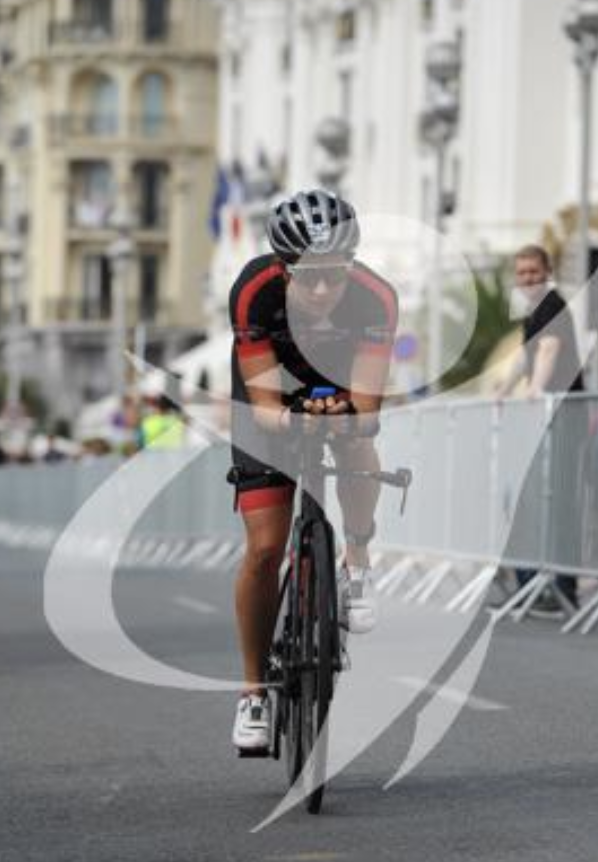
I mounted my bike immediately after the mount line and accelerated quickly to pass a few athletes along Promenade de Anglais, a straight 6k section of road heading west out of Nice, marked with pylons and lined with spectators for the first 2-3 km. Leading up to the race, there was a long discussion on the IM 70.3 WC Facebook page as to whether a triathlon or road bike was optimal for this race. General consensus was that whichever you were more comfortable climbing and descending on was the best option and this was definitely the case! After we turned and headed northbound along the industrial road (Chemin des Berges du Var), there was a strong headwind and I was thankful to be on a tri bike as I was overtaking athletes on road bikes.
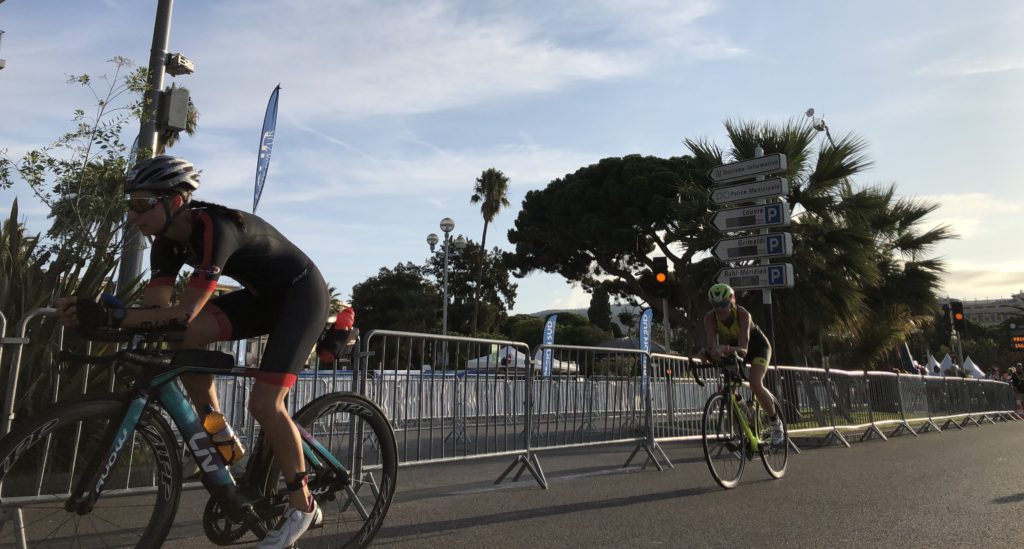
At 10k, the climbing began with a few short, steep climbs up to 20% grade that forced me out of my saddle and woke up my quads. Thankfully, there were flat or downhill sections after most of the steep climbs, which enabled me to catch my breath, let my legs recover and ingest some fuel. The main climb up Col de Vence went from 26.4k to 36.2k, with an average grade of 7%, with no flat or downhill sections until the top. Around kilometer 25, I was passed by 2 male cyclists who were out for a leisurely Saturday bike ride; I was pissed off, as this was a women’s only race (male triathletes competing on Sunday were forbidden to ride the bike course until after 2:30 pm) and it was demoralizing to be passed by a male cyclist who wasn’t even racing, on our closed race course.
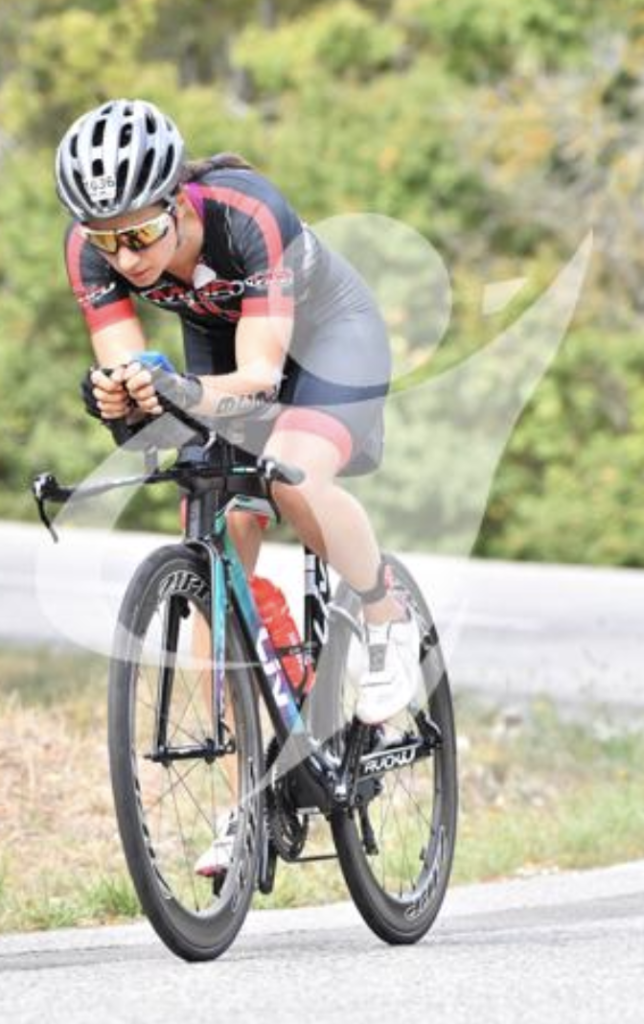
I refocused and recalled all the Saturday morning hill repeats up Observatory Hill in Victoria with my MelRad triathlon group and realized that I was well-prepared to ride up 1200m over 34k. We rode through 10 to 20 small French villages, perched on rocky outcroppings along the mountainside. Locals welcomed us to each village, cheering us on, “Allez, allez!”. The spectators’ energy and enthusiasm were contagious and much appreciated.
As we continued to climb higher, we entered into a more arid environment with smaller trees and more sun exposure. I distracted myself from the heat and non-stop exertion by counting down the kilometer markings to Col de Vence, which started around 9k from the top and included the average hill grade for the subsequent kilometer. I felt strong for the duration of the climb and kept my heart rate between 155-160 bpm, rising slightly higher only when I was accelerating past other athletes quickly enough to avoid a drafting penalty.
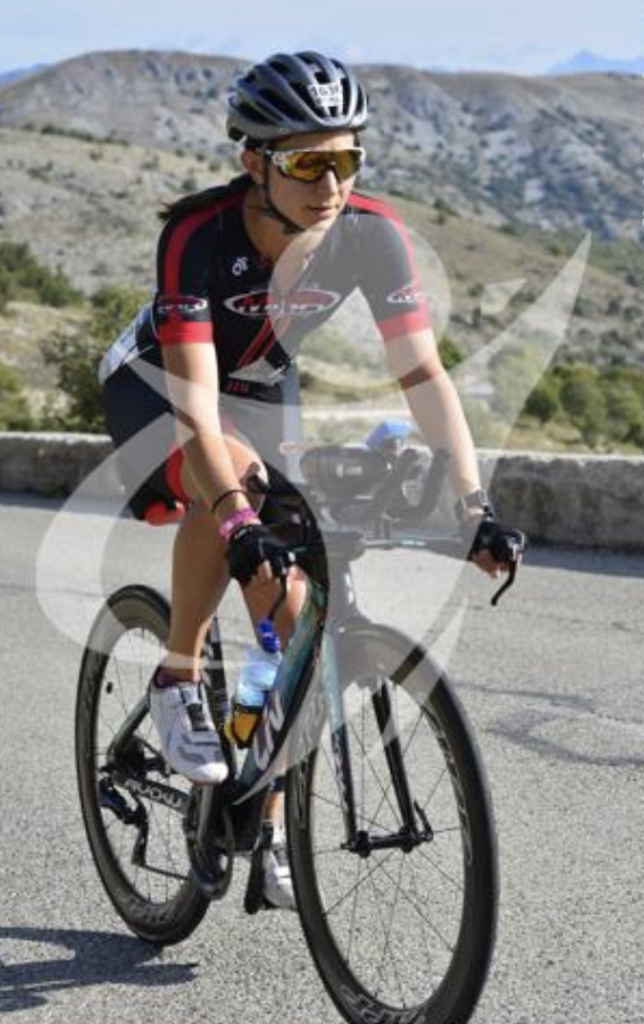
I rode hard past the aid station and tucked into my aerobars for the first part of the descent. It had been helpful to have ridden this next part of the course the day before. The last 5k section of gradual uphill felt easier than I anticipated and I continued to ingest more Clif bloks, water and Gatorade before the long descent. I was surprised how cautiously many of the women ahead of me were descending and I was equally surprised that I felt so confident on the descent.
A few kilometers into the descent, a couple of volunteers were standing towards the middle of the road motioning us to slow down. About 50m later, we rode passed a female athlete who had crashed and was wrapped in an emergency blanket on the median of the road. Another athlete had stopped to attend to her, along with a couple of volunteers, presumably waiting for an ambulance. The injured woman was conscious but in shock. Seeing this was a sobering experience for all of us, and I took the descents more carefully after passing her.
I felt strong and continued to pass several athletes on the descent. There were limited opportunities to drink and eat, but I forced some Clif bloks in my mouth whenever I had the chance to ensure I would have enough energy for the run. At the last aid station, an athlete ahead of me dropped a water bottle onto the road, rolling directly into my path. I somehow avoided it at the last second, causing me to become agitated for a moment. Shortly after, I nearly crashed into a rocky brick wall while navigating around a tight corner.
As I finished the descent, I was on my own, guided by the course markers and helpful volunteers. The last technical part of the bike course was returning onto the Promenade des Anglais around a wide curve, that ended with a super tight hairpin turn around a bunch of pylons. I later found out that several other women had to unclip from their pedals at this point because it was such a sharp turn. As I headed towards T2 on the Promenade with less than 7k to go, I reached a comfortable 38-40 km/h in my aerobars with my head mostly tucked down and was able to sip on a bit more water and Gatorade. Although the bike course progressively narrowed as we approached town, I continued to shout out, “On your left!” and passed a few more athletes before turning left and riding up the spectator-lined, cobblestone path leading to T2.
I dismounted my bike a metre before the dismount line and ran in my bike shoes, until the woman in front of me got stopped by an official for undoing her helmet strap before racking her bike. I quickly racked my bike, grabbed my Garmin bike computer (apparently several athletes reported that their bike computers had gone missing from either their bikes or their T2 bags the following day) and ran to the run gear bag rack area. I dumped the contents on the ground and switched shoes, removed my helmet, put on my hat, grabbed my First Endurance Canada EFS Liquid Shot flask (same as what I used for IM Canada), and removed my bike gloves at the last second before handing my bag off to a volunteer. Needless to say, my T2 was definitely more efficient than T1 in this race.
T2: 2:30
21.1k Run
(Check out my run on Strava!)
Time: 1:41:22
Pace: 4:48/km
Average HR: 170 bpm
Division Rank: 106/246
Overall Rank: 464/1778
I had no idea when I crossed the timing mat exiting T2, but suddenly I was out on the run course. Spectators were pressed up on both sides of the barricades and were cheering us on by the names on our race bibs. I smiled in response and tried to enjoy the moment, before I realizing that I still had to run 21 km. The run course took several sharp turns and a dip through an underground tunnel (presumably to avoid interfering with the bike course) before entering onto the Promenade. As the run course was two out-and-back loops, I could hear the spectators close to the finish line cheering loudly.
I glanced down at my watch every so often and was pleasantly surprised to see a sub 5:00/km pace. My heart rate was higher (160-165 bpm) than usual for the pace, but I attributed that to the heat. It was close to 30o Celsius. Aid stations were located every 1.6 km and I could not have been happier to see each one of them. I drank sips of water and splashed the rest on my face and grabbed ice at every aid station where it was available. Between kilometers 2.5 and 16, I took a sip of my EFS Liquid Shot every 15-20 minutes.

As I ran further away from the finish line and towards the airport, the number of spectators sharply declined, making it harder to remain focused. My thoughts alternated between trying to enjoy the moment, thinking about my running posture and mechanics, calculating how much longer I had to keep running if I maintained the current pace, looking forward to eventually crossing the finish line and wondering what delicious French food I would get to eat. A few hundred metres after the turnaround near the airport, I spotted a fellow Canadian in my age group running towards the turnaround on the other side of the course and I tried to use that as motivation to keep or improve my current pace so that she couldn’t catch up to me.
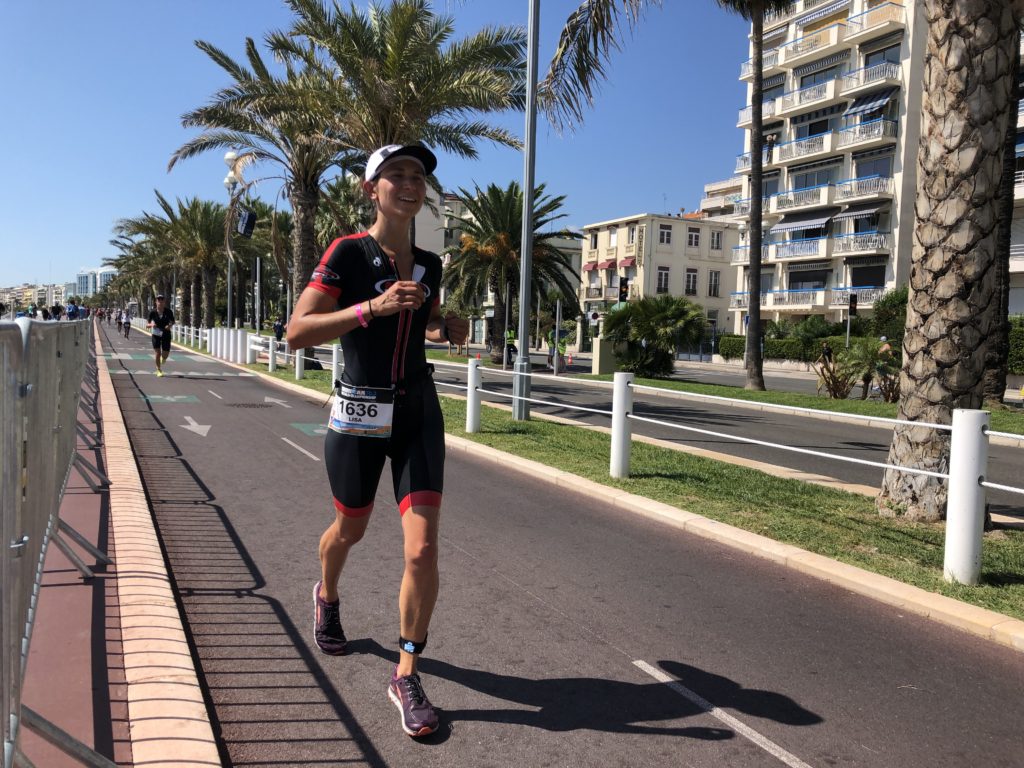
About 1 km from the start of my second lap, I spotted Rod off to the right side and forced a smile for his iPhone, even though all I wanted to do was complain about how much I was suffering. My left hamstring started grumbling around 15k, but it wasn’t severe enough to slow me down. My coach had warned me that the hardest part of the run would be from kilometers 13 to 17, and I vowed to myself that I would try as hard as I could to maintain my current pace. During my second lap, the course was flooded with runners and the aid stations were not prepared. I was only able to grab ice at a couple of the aid stations on my second lap and had to grab my own cups of water a few times.
My heart rate continued to climb and I could feel the heat, but there was a bit of relief after the final turnaround point near the airport, as I was able to get a bit of shade next to a fence. My legs felt heavy running back towards the finish line, but seeing Rod around 19 km gave me an extra boost to pass as many people as I could on my way to the finish line. The last 2k felt the longest, despite the number of spectators cheering on the sidelines. There was a big blue Ville de Nice archway that wrapped over top of the run course that I initially thought was the finish line on my first lap, which was actually 1 km from the finish line; as I passed under the archway, I told myself that I had less than 5 minutes of suffering to go.
Similar to the ITU race, my legs were lacking an extra gear but I pushed the pace as hard as I could approaching the finish chute and Ironman carpet. I passed a few more athletes as I sprinted my way down the finish chute and threw my hands up in the air in celebration of completing my first ever Ironman 70.3 World Championship. My finish time was 5:33:53; I finished 73rd out of 246 in my age group and 320th out of 1778 women.
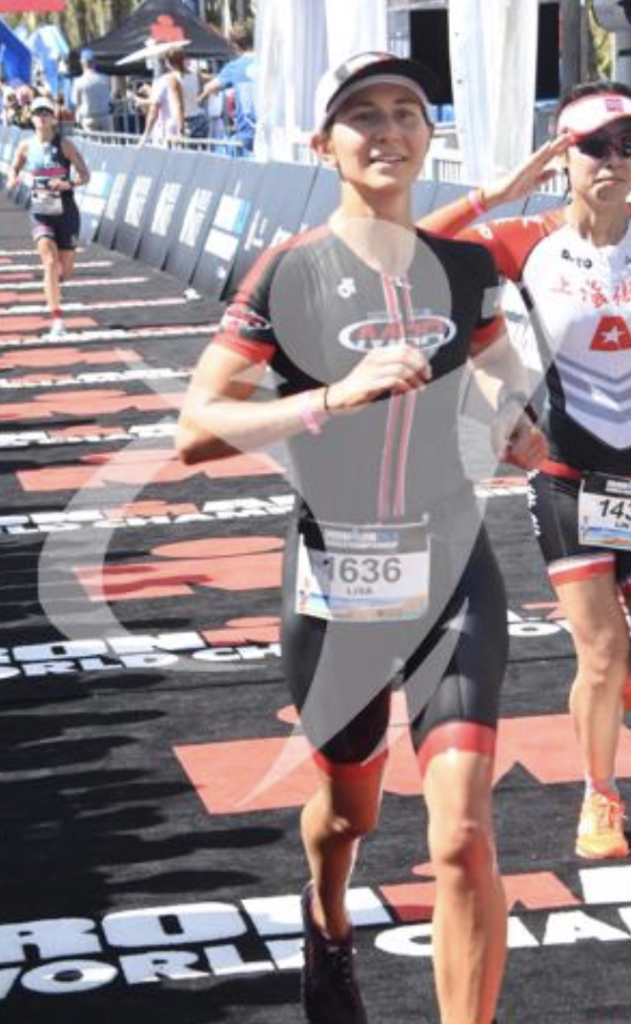
I felt accomplished to have finished such a legendary race and relieved that my race season was finally over. My legs felt like jelly; I had trouble walking in a straight line as my finisher’s medal was placed around my neck and a volunteer wrapped me in a big beach towel. I was given a finisher’s hat and t-shirt, then directed towards the morning clothes bag area. I waited for Katie and another Canadian athlete, who were close behind me. The 3 of us wobbled over to the post-race food area in the outdoor amphitheatre and enjoyed a post-race meal of Nutella crepes, soufflé, pizza, pretzels, beer and water – not a bad way to satisfy my hard-earned appetite! It was enjoyable to sit down with a couple of fellow Canadians and bond over new blisters, technology mishaps and food sensitivities. Once we were adequately refueled and somewhat rehydrated, we made our way back out to find our family and loved ones.
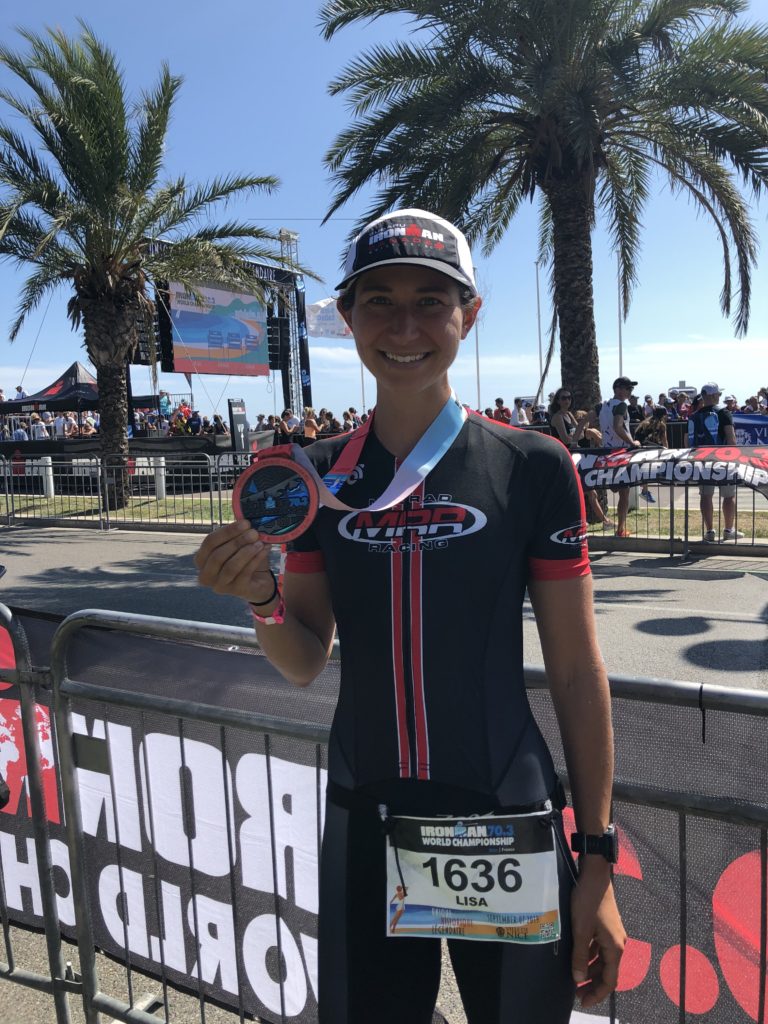
Post-Race Thoughts
This was not my fastest swim, which I attribute to a couple of key factors. In the 2 weeks leading up to the race, I only completed one structured swim workout and had limited access to a pool while in Europe. This was my first open water swim in saltwater; living in Nanaimo next to the ocean, I should have forced myself to practice swimming in the Georgia Strait throughout the summer to get comfortable in a large, salty body of water. Perhaps I would have been more at ease swimming in ocean swells and would have a better understanding of how saltwater makes you even more buoyant. Although I wonder if I could have pushed harder climbing Col de Vence, I am happy with my bike performance and was surprised how comfortable I felt descending down the technical switchbacks and around blind corners. My run was slightly better than I expected and was my best-ever half marathon time! I’m astonished that I was able to run with my heart rate that high, but I think that the insanely energetic environment kept me going. Not surprisingly, I need to simplify my transitions and should have prioritized speed over comfort. Nevertheless, I experienced minimal chafing and was able to ride my triathlon bike up Mont Ventoux 4 days later with Rod!
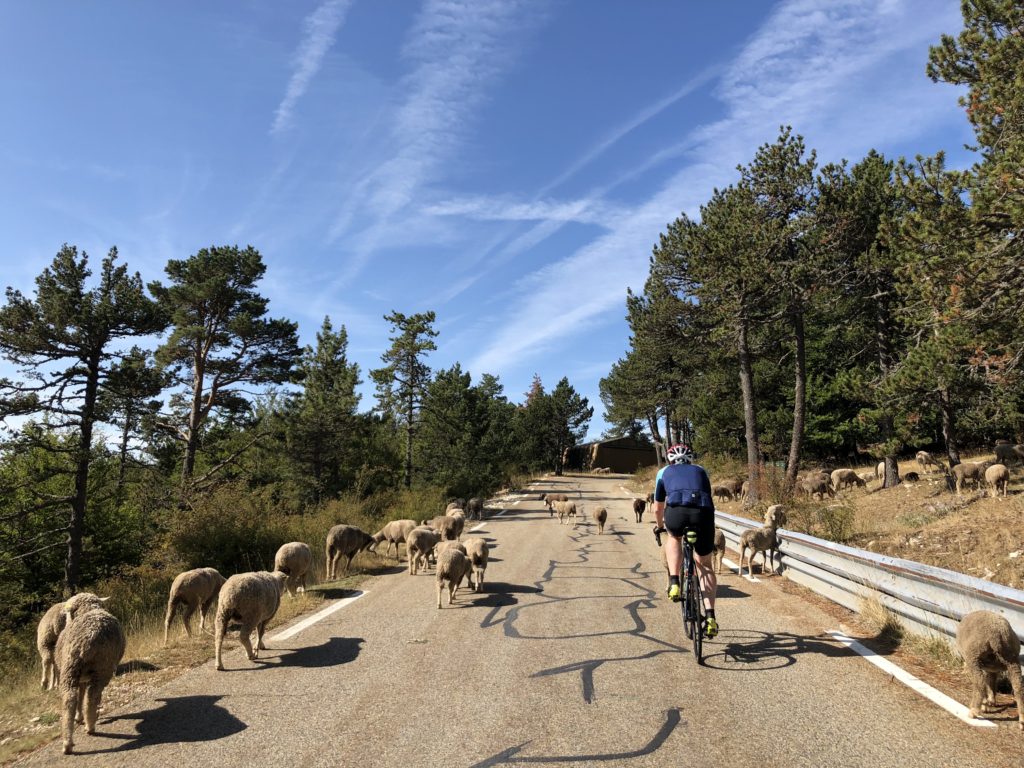
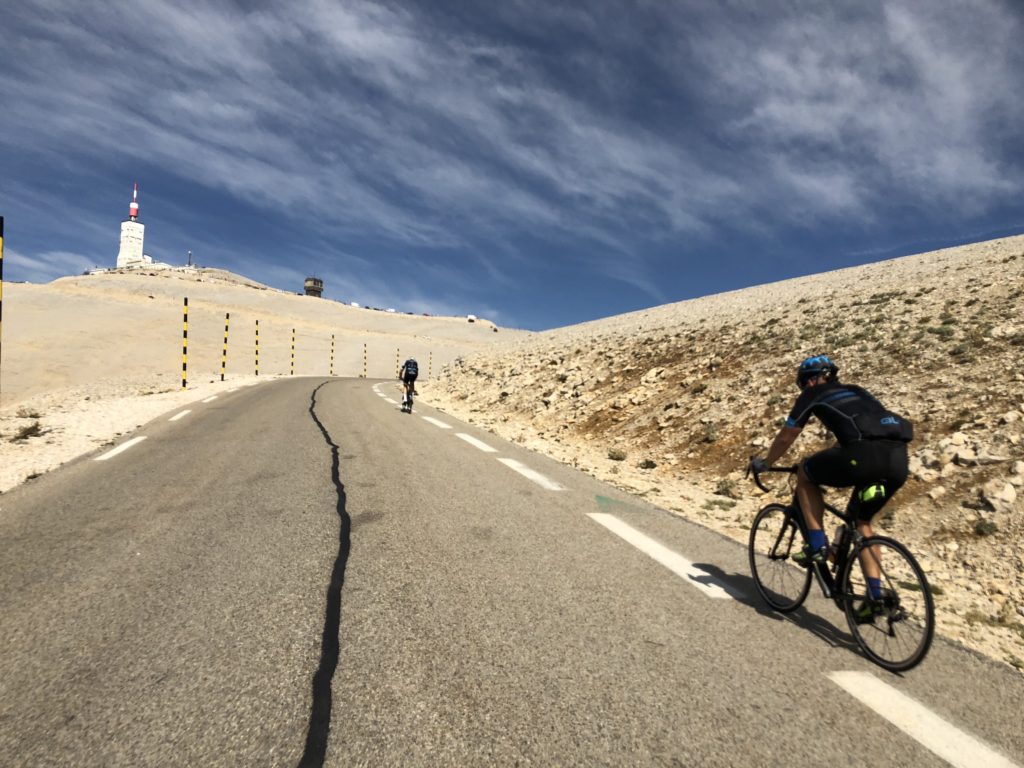
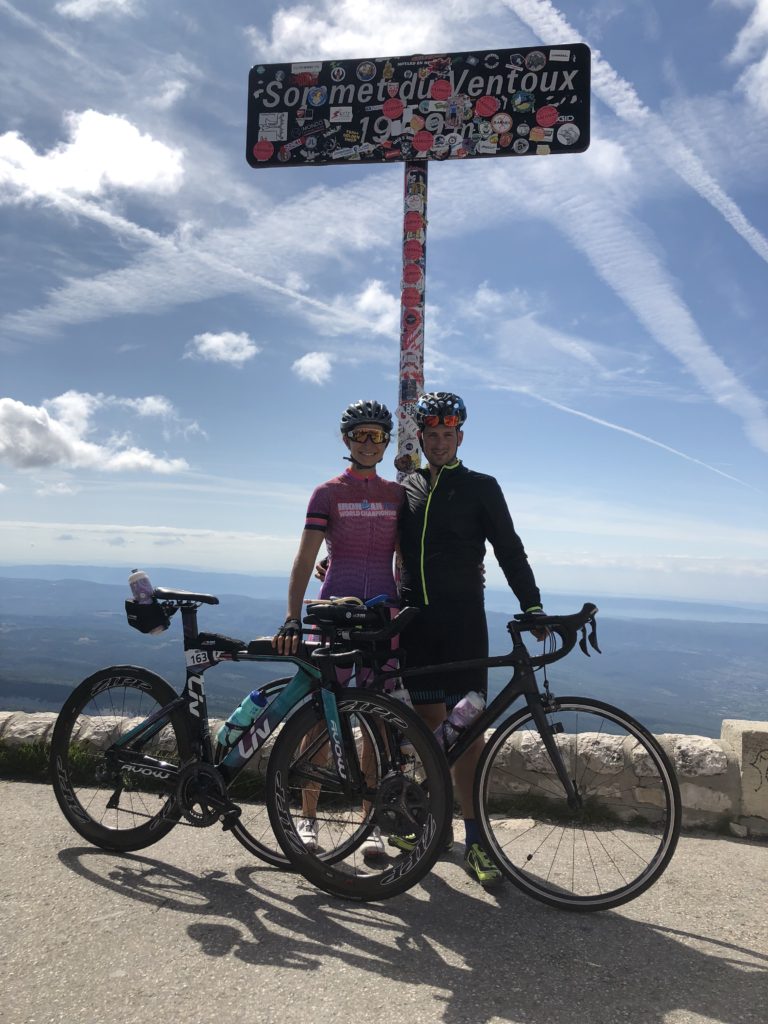
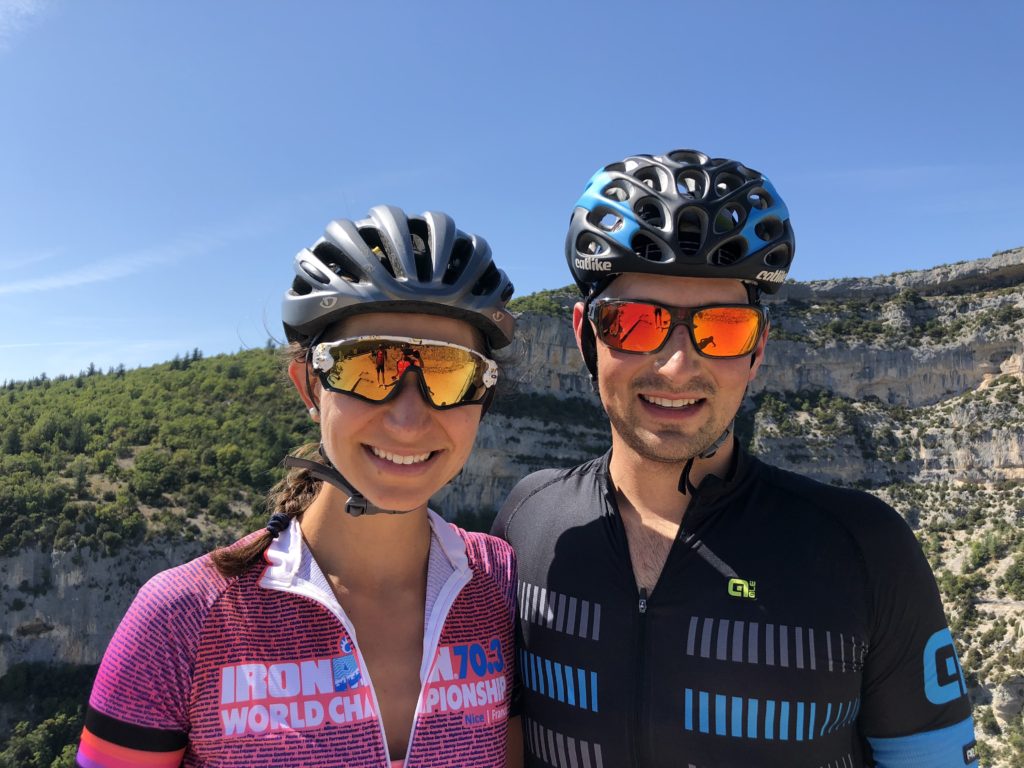
The IM 70.3 WC race was the most exhilarating 70.3 race I have ever done and it was the best possible way to end my 2019 race season – in a place where there is an abundance of wine, cheese and carbs.


